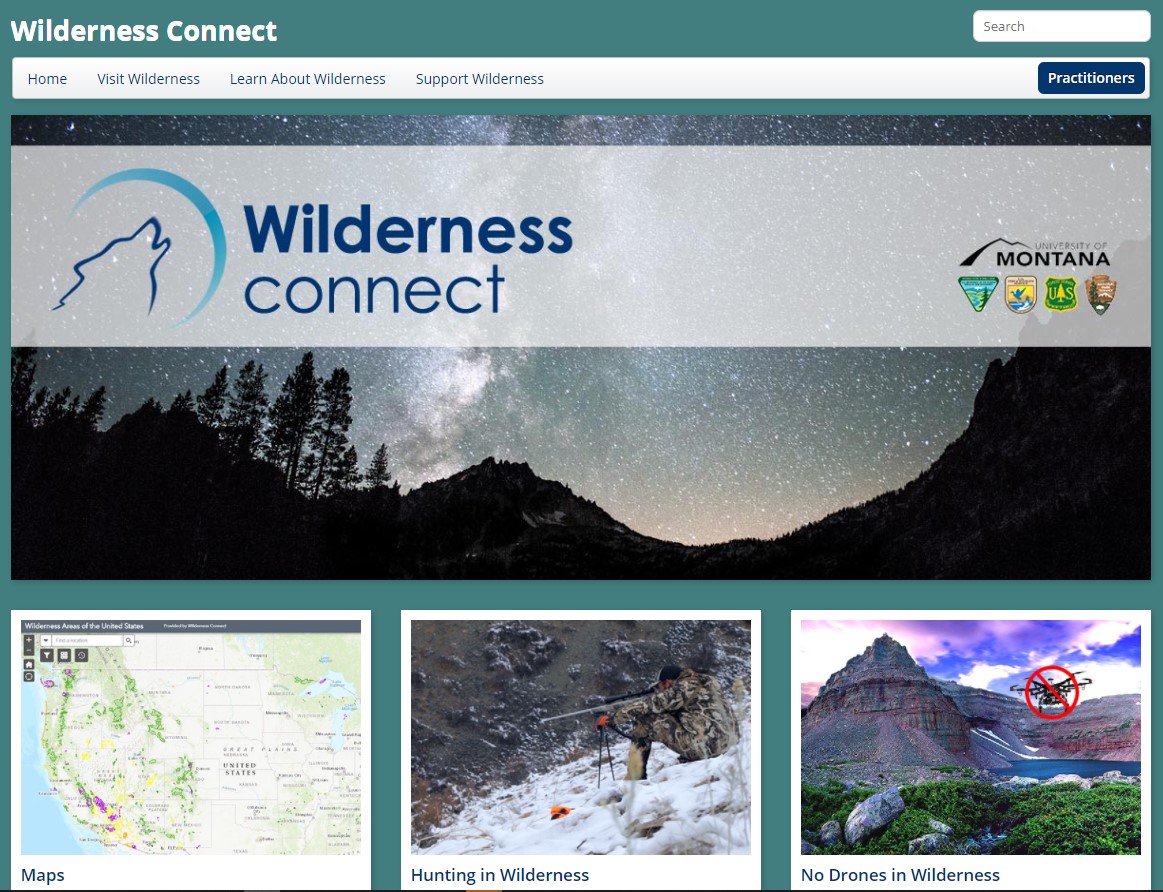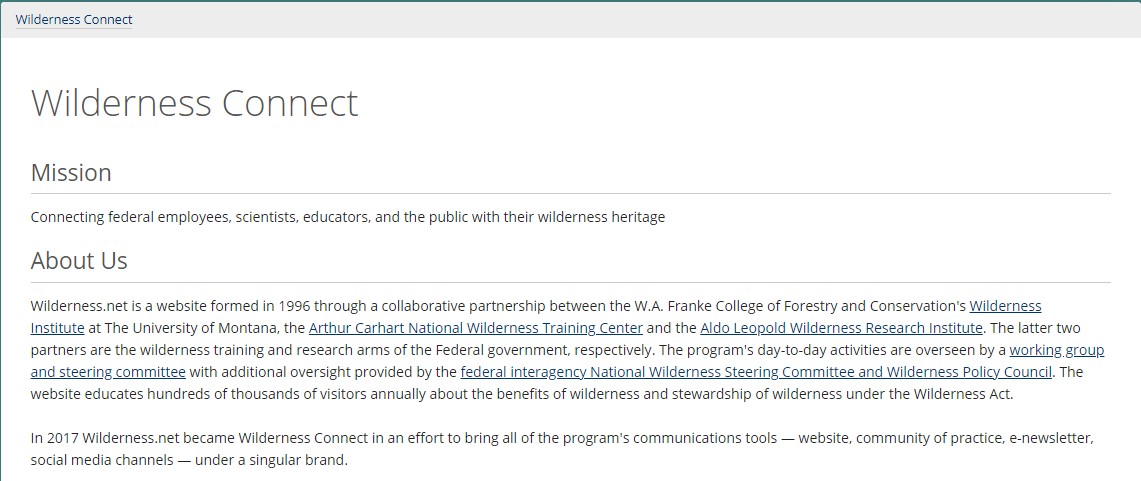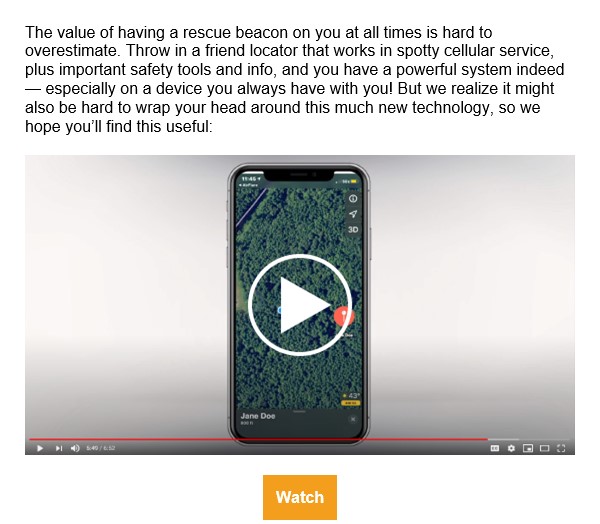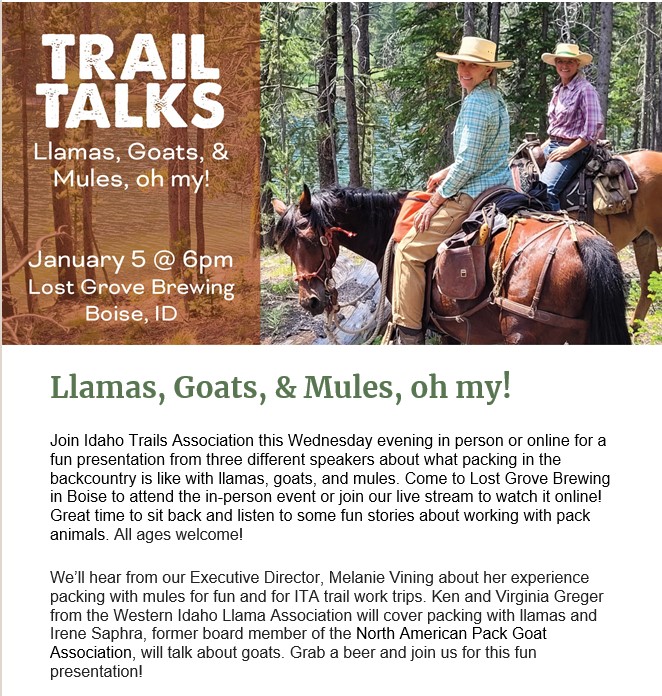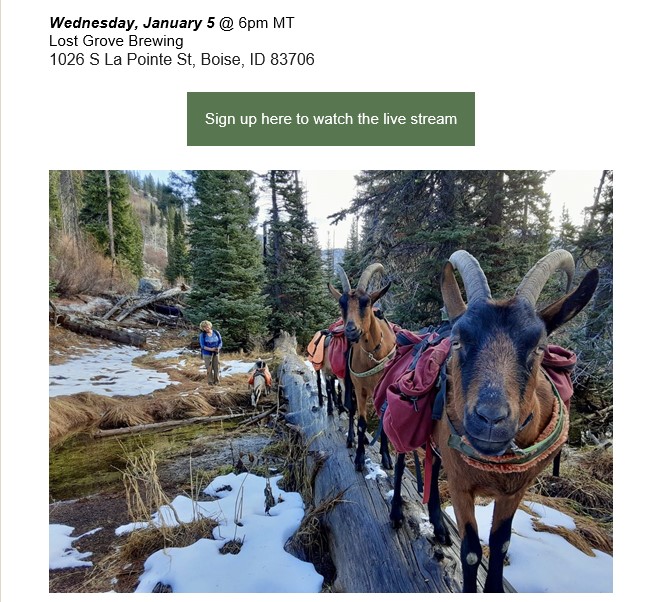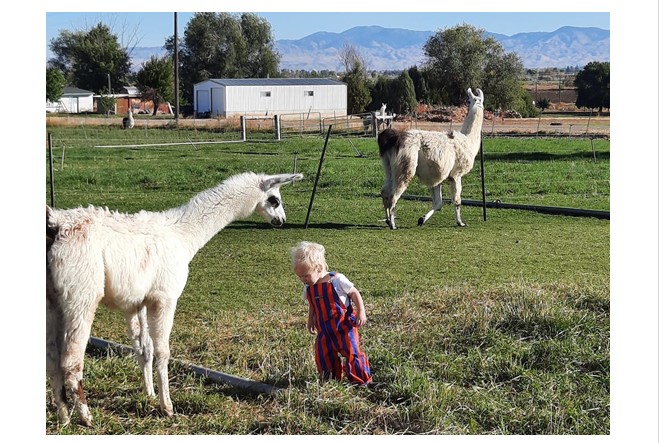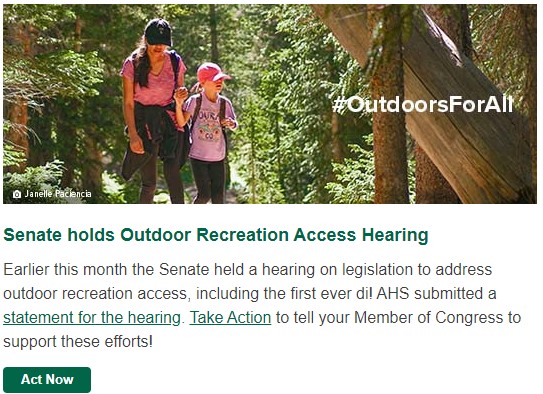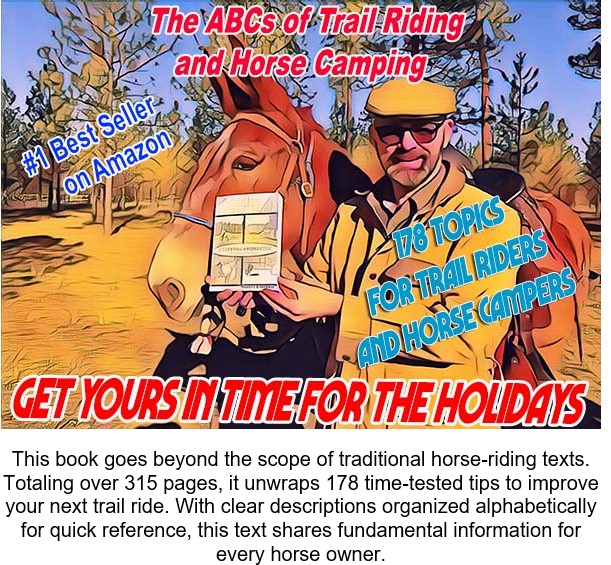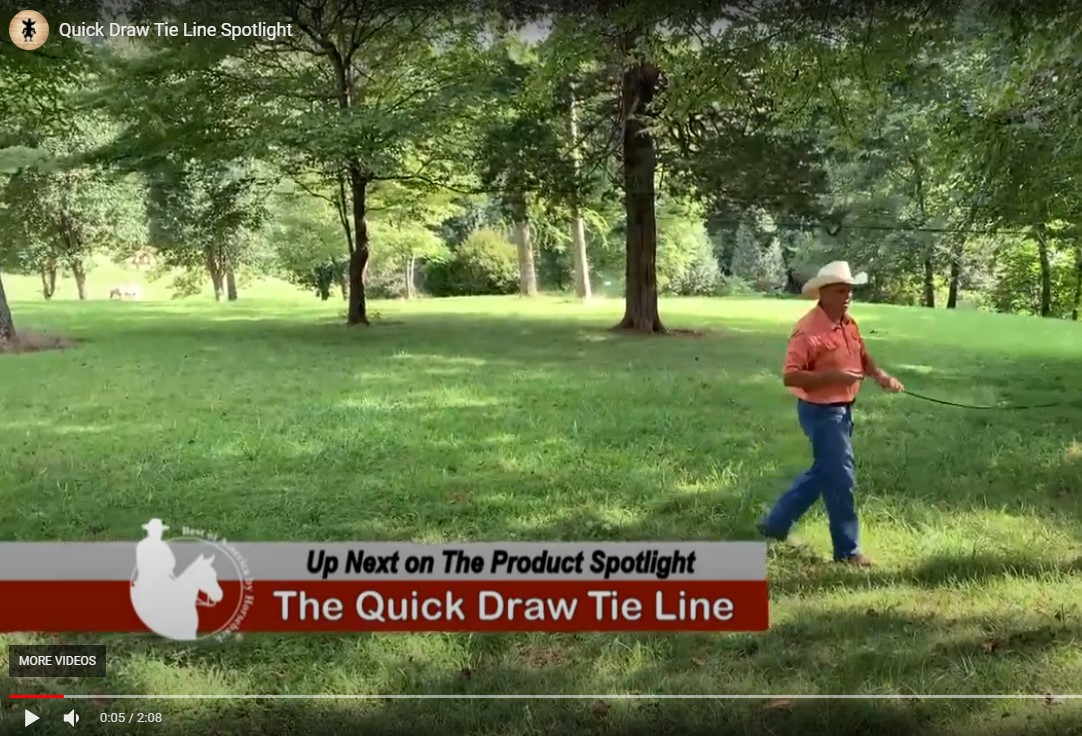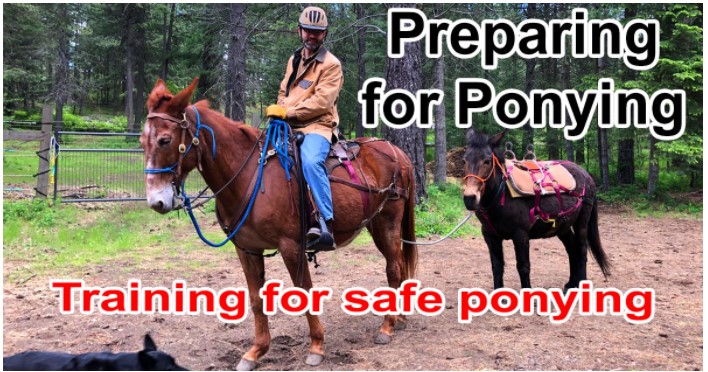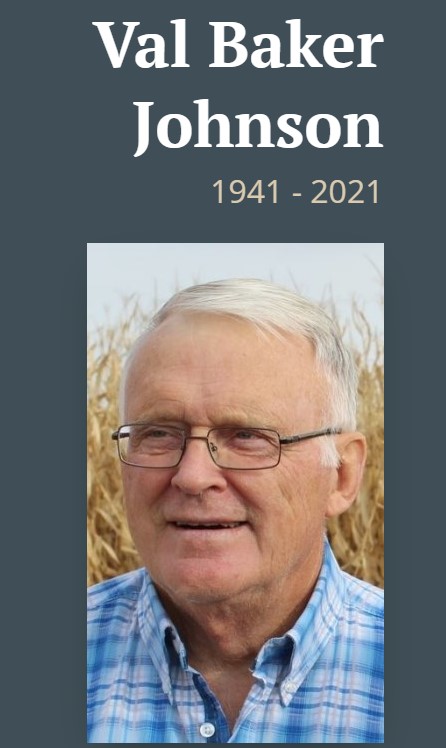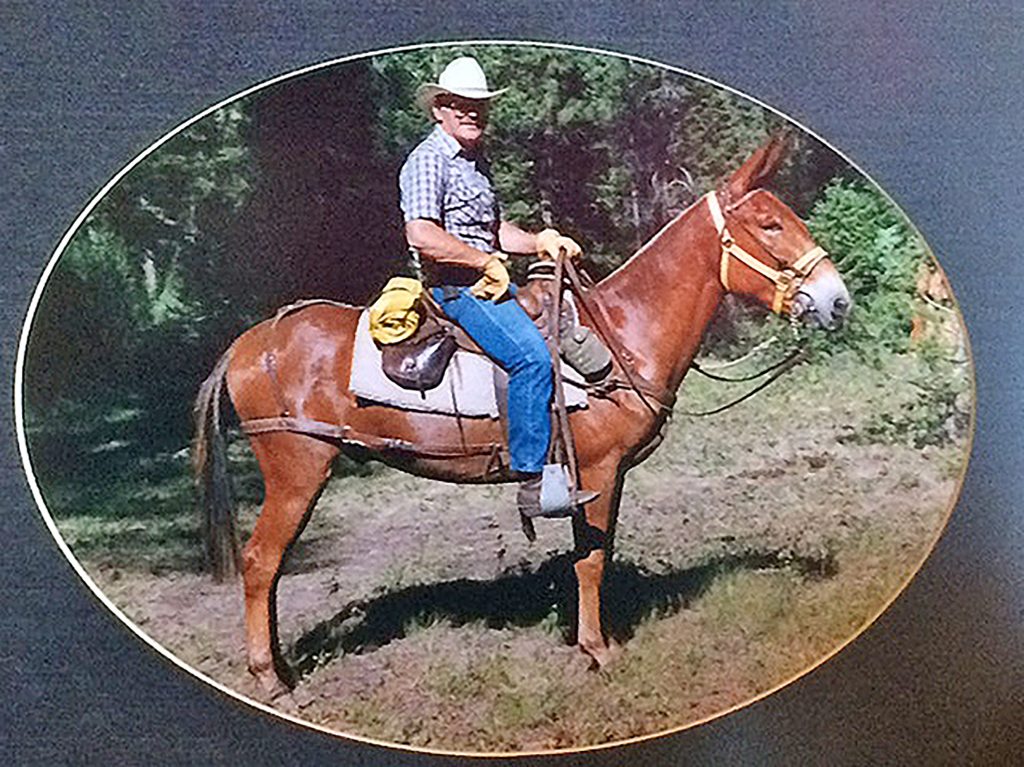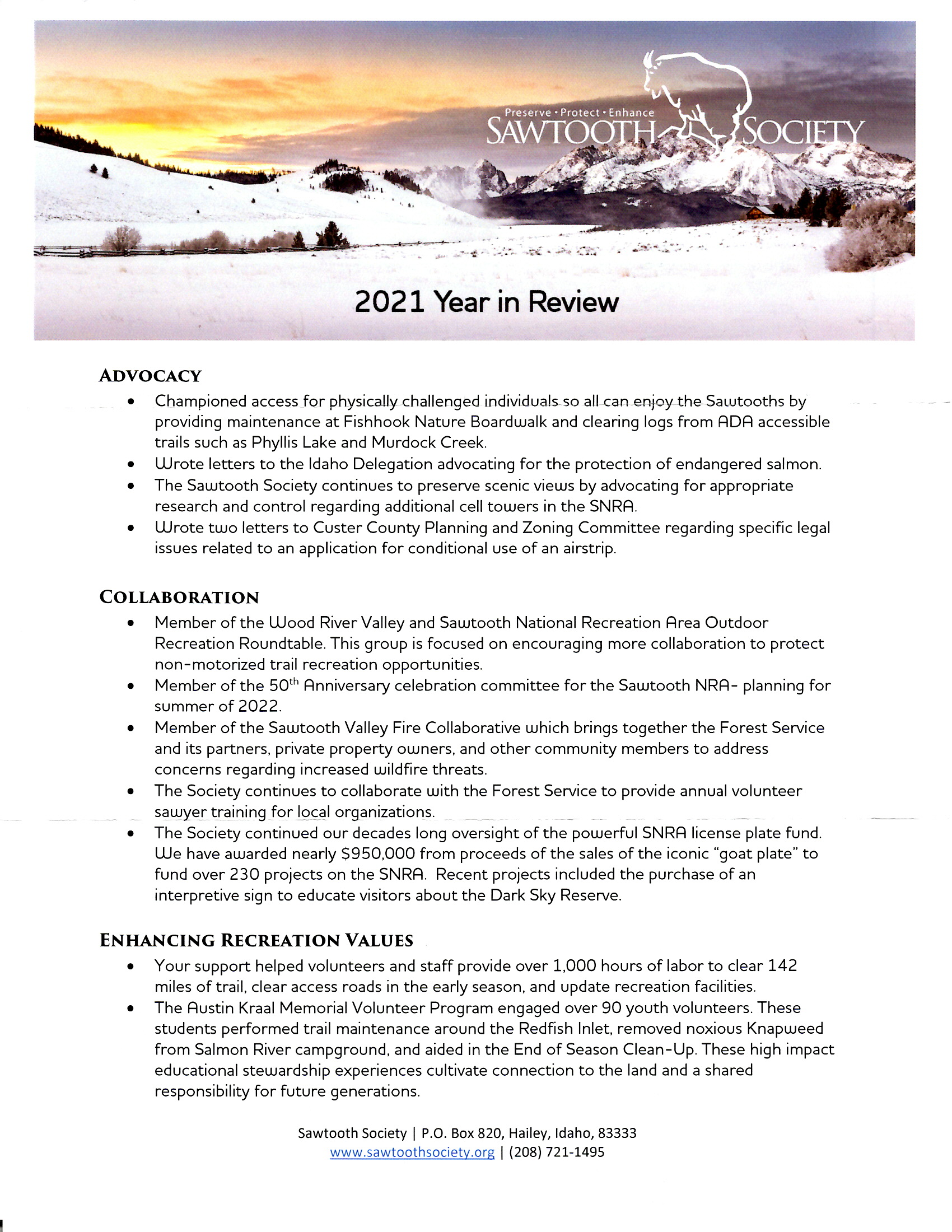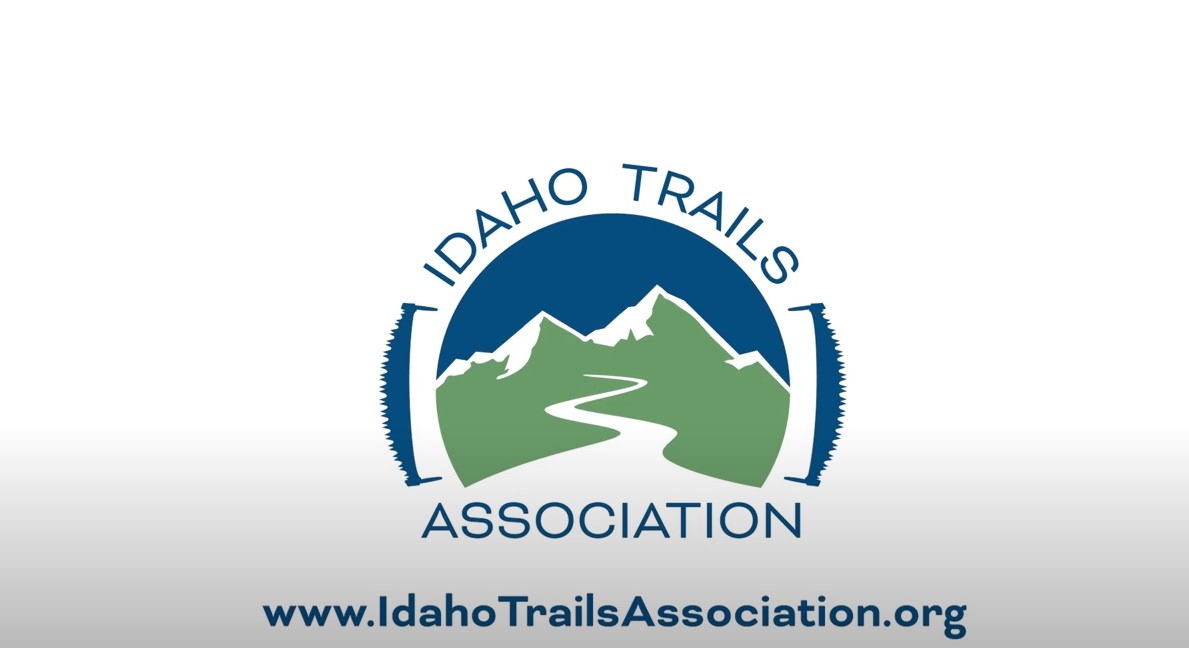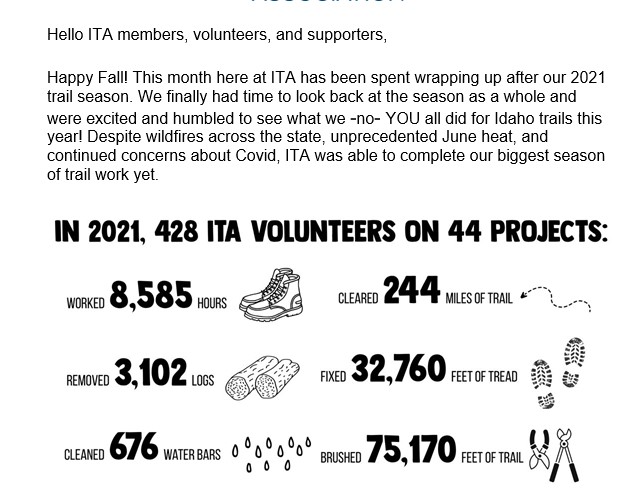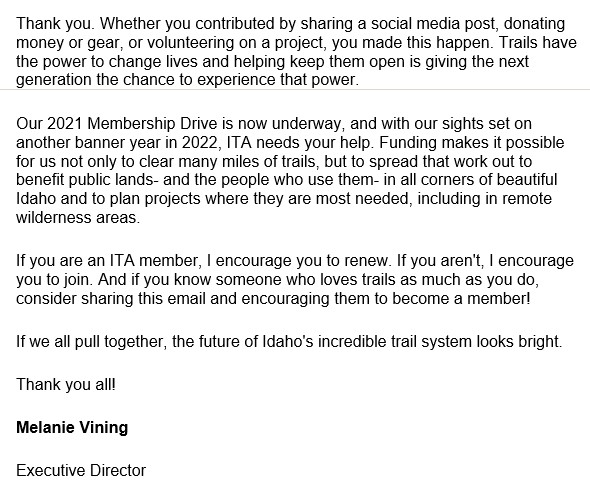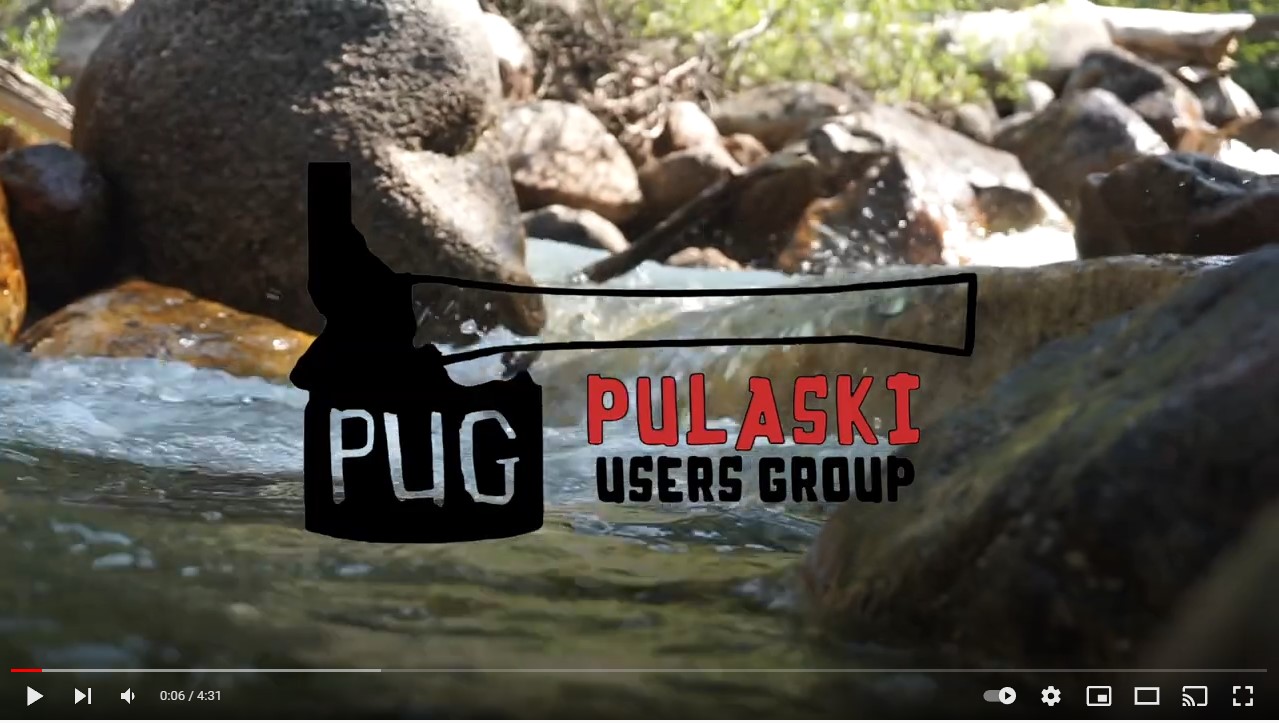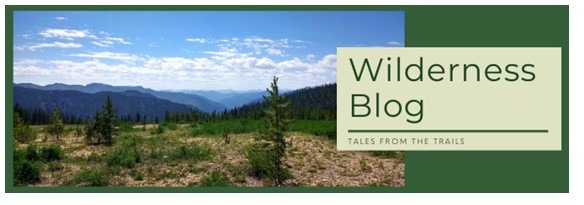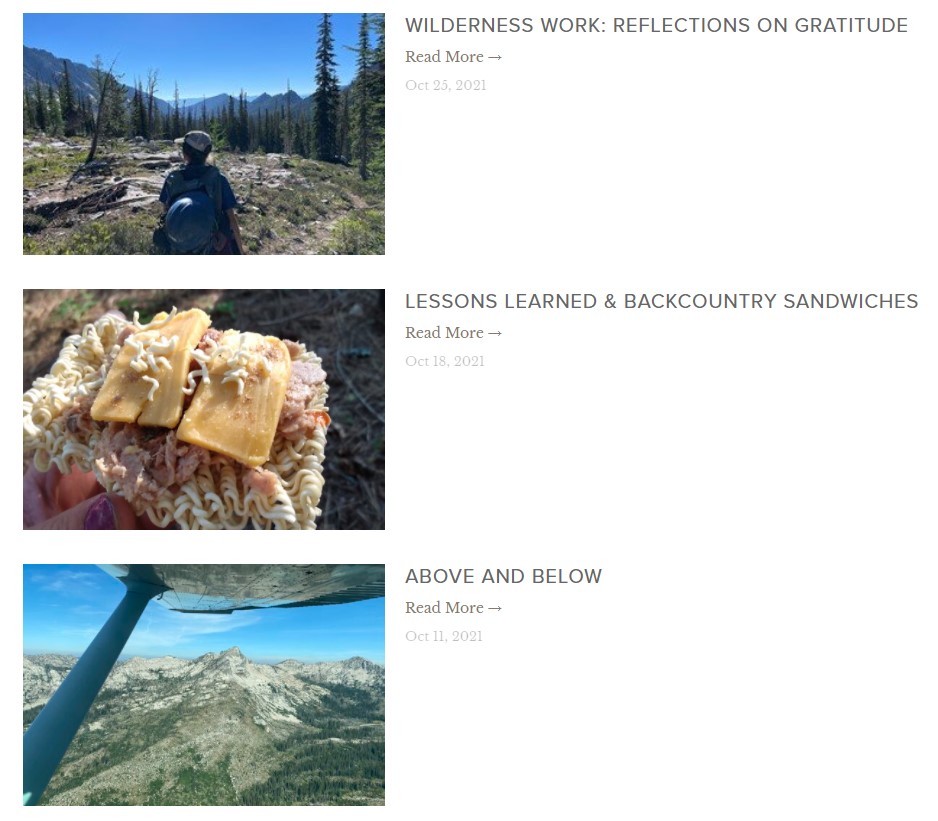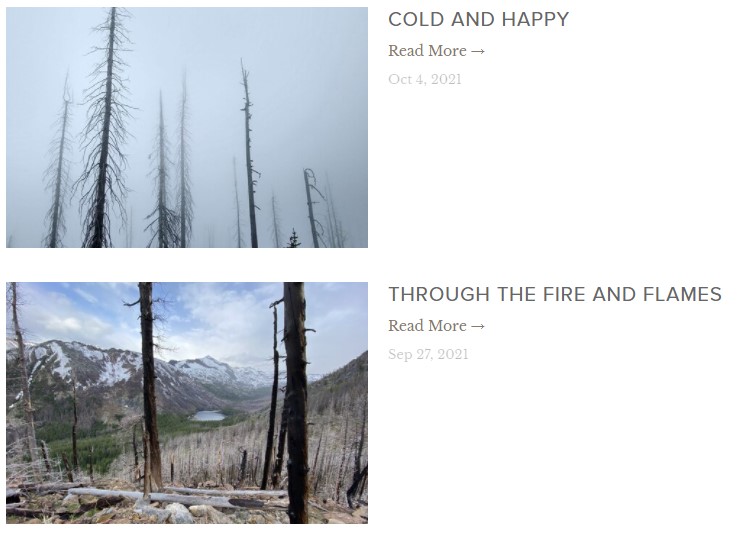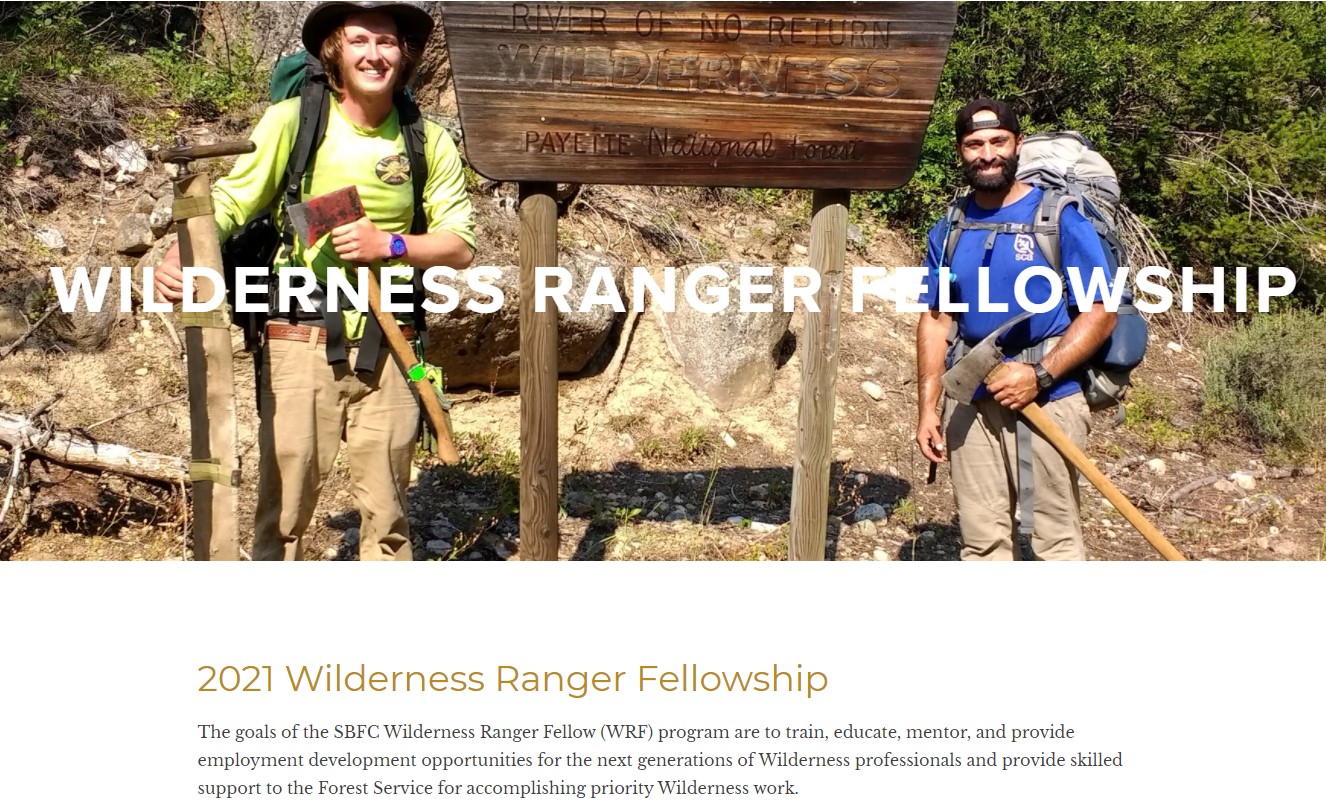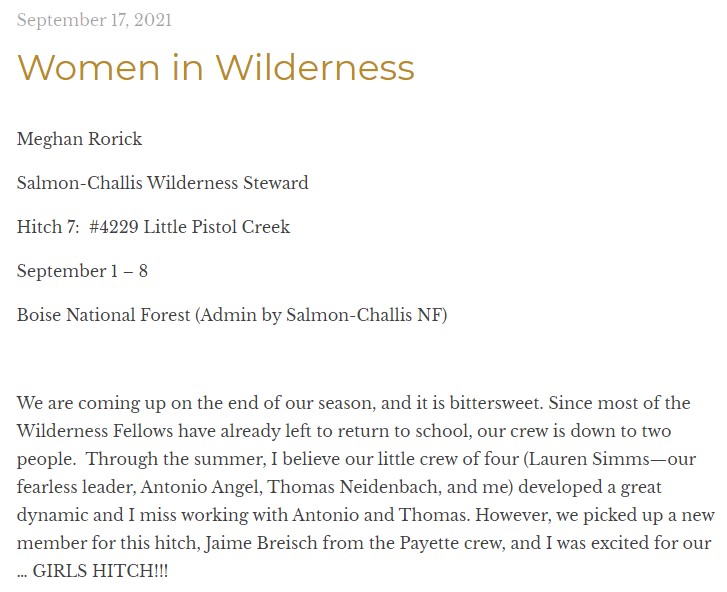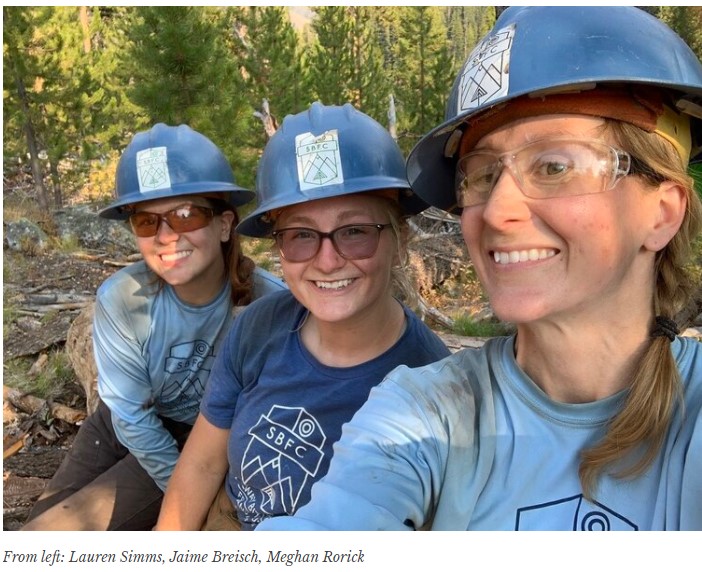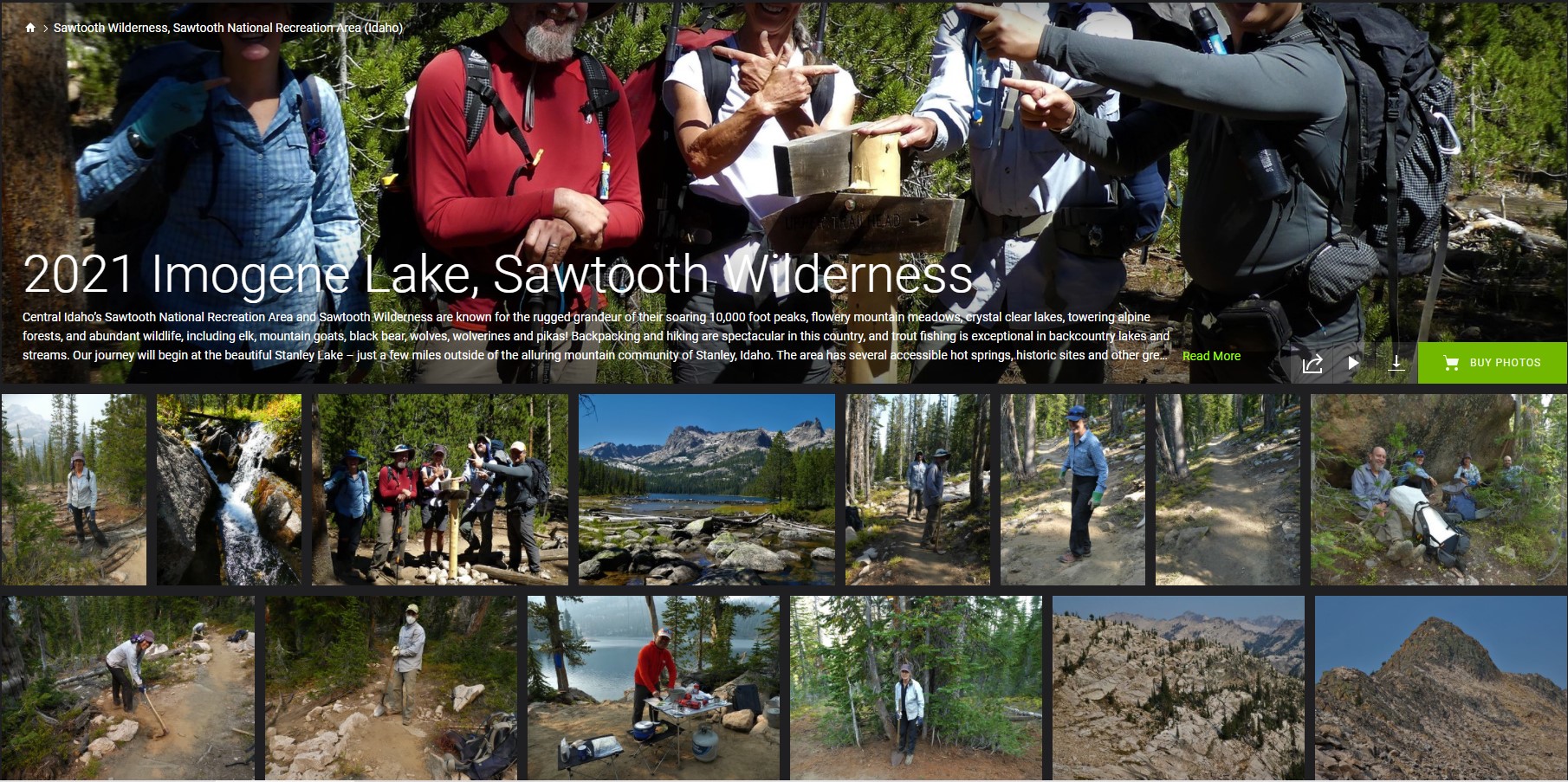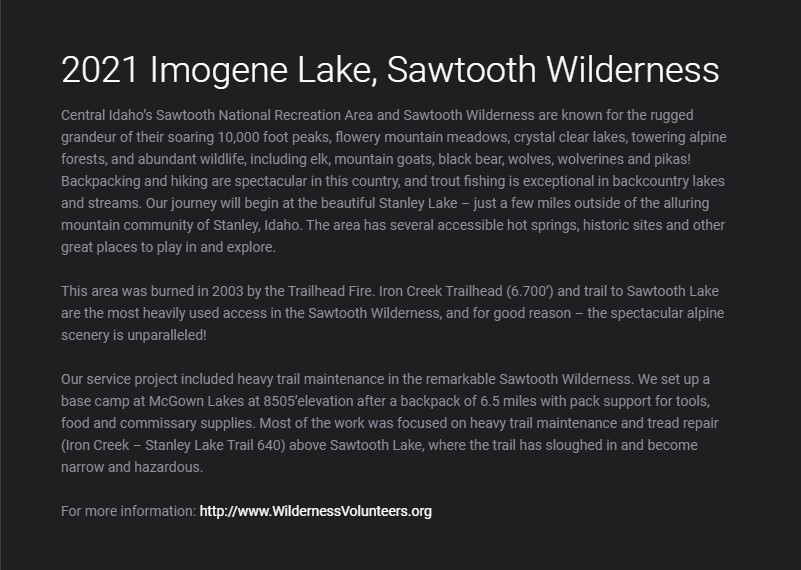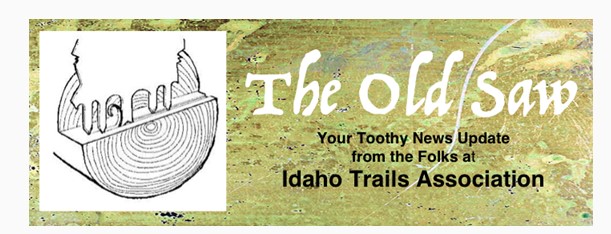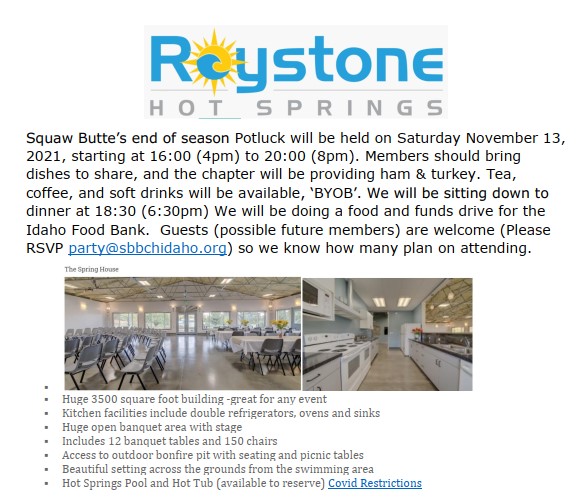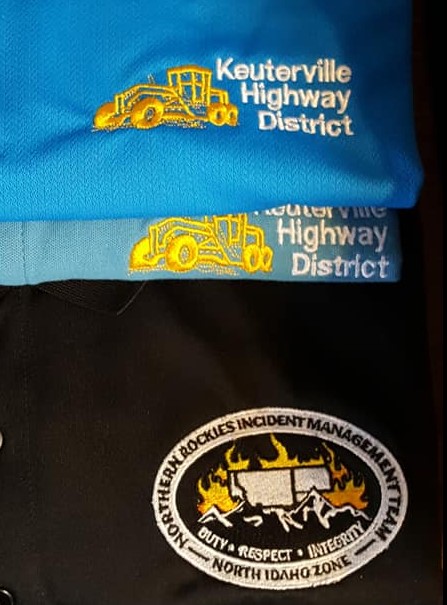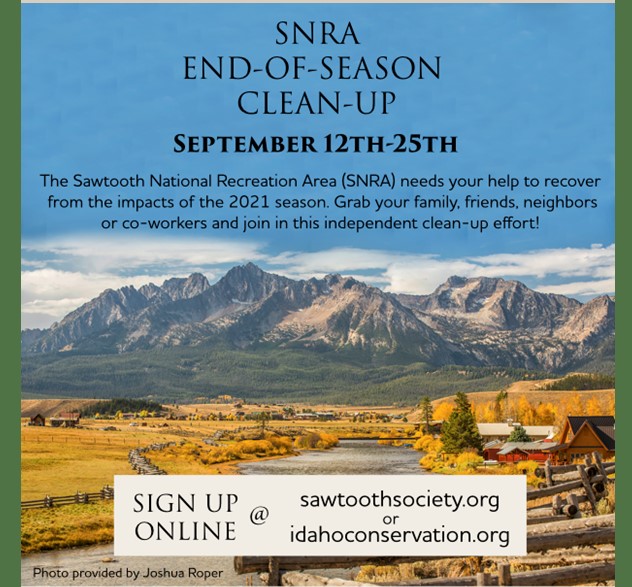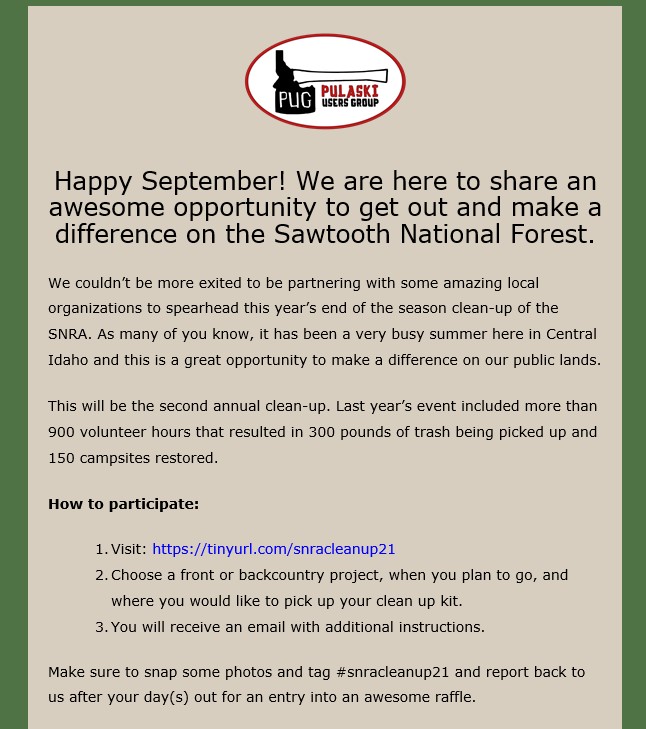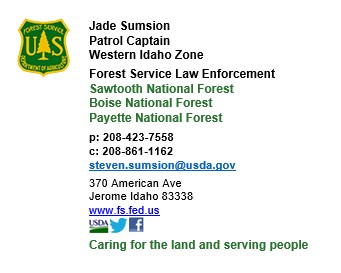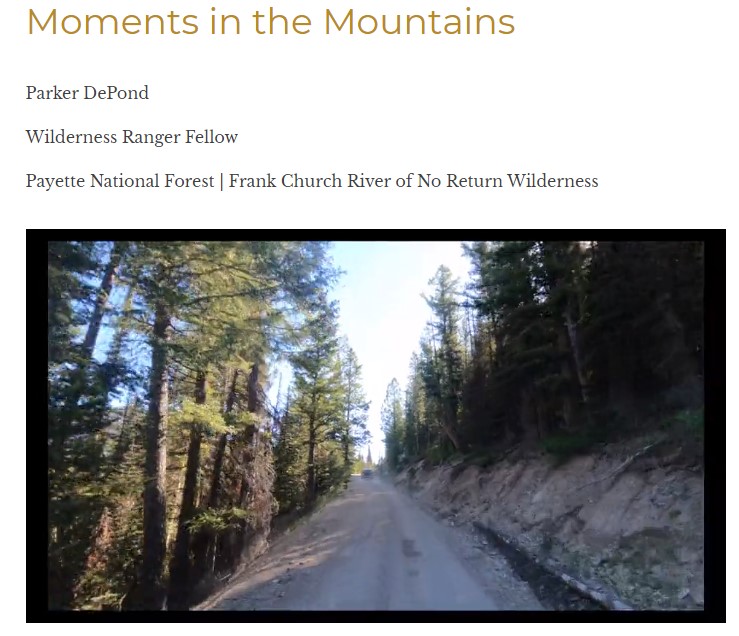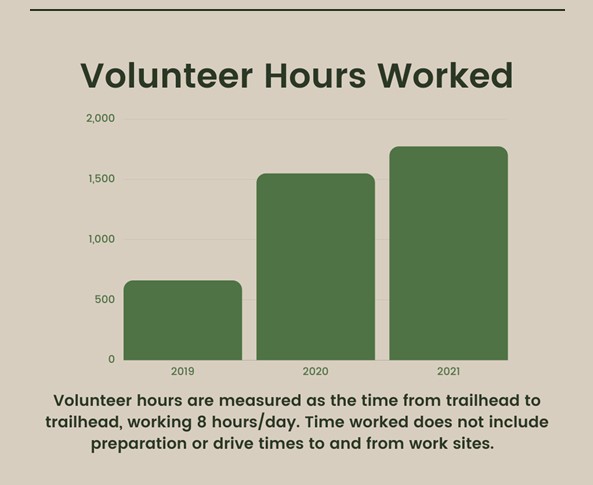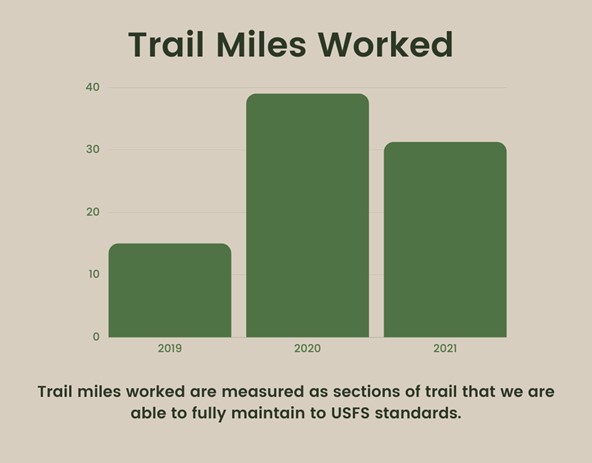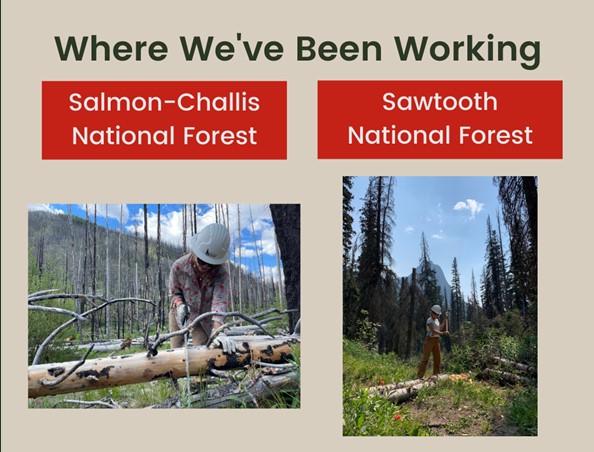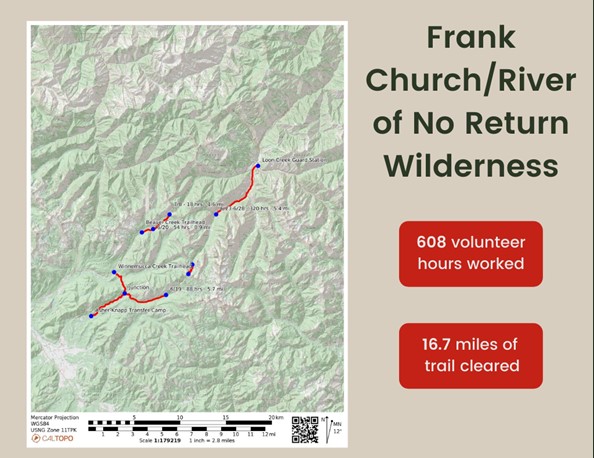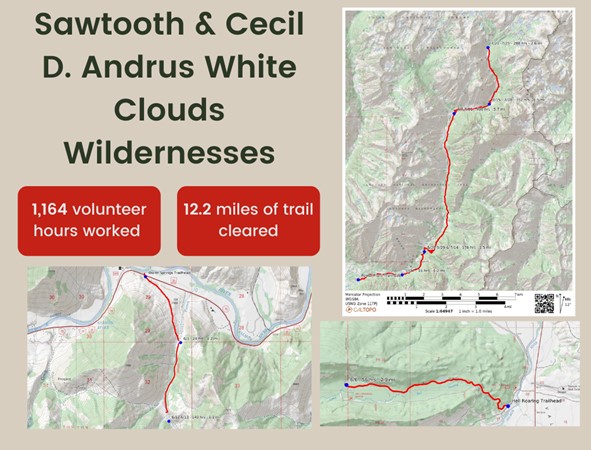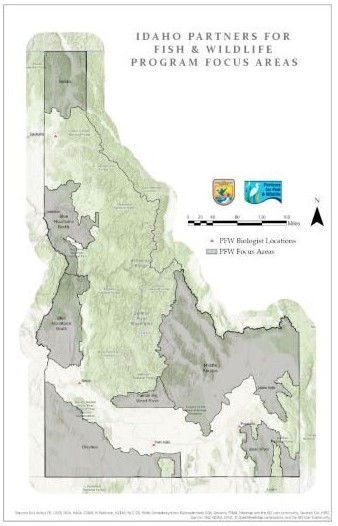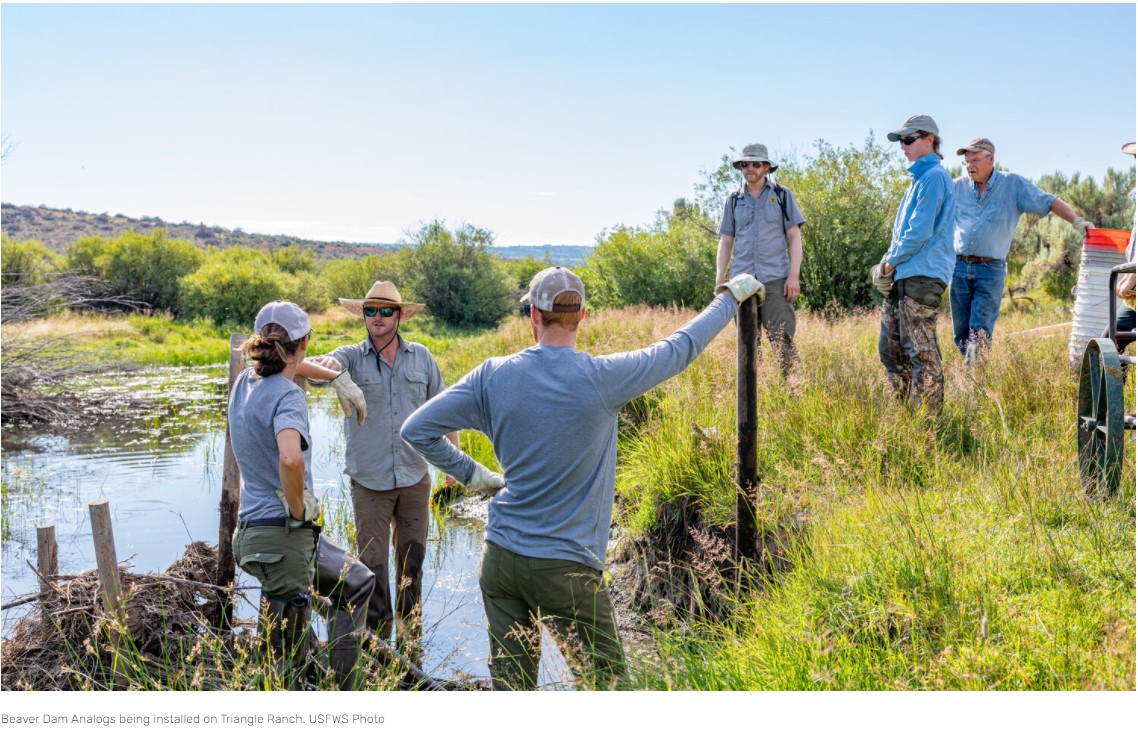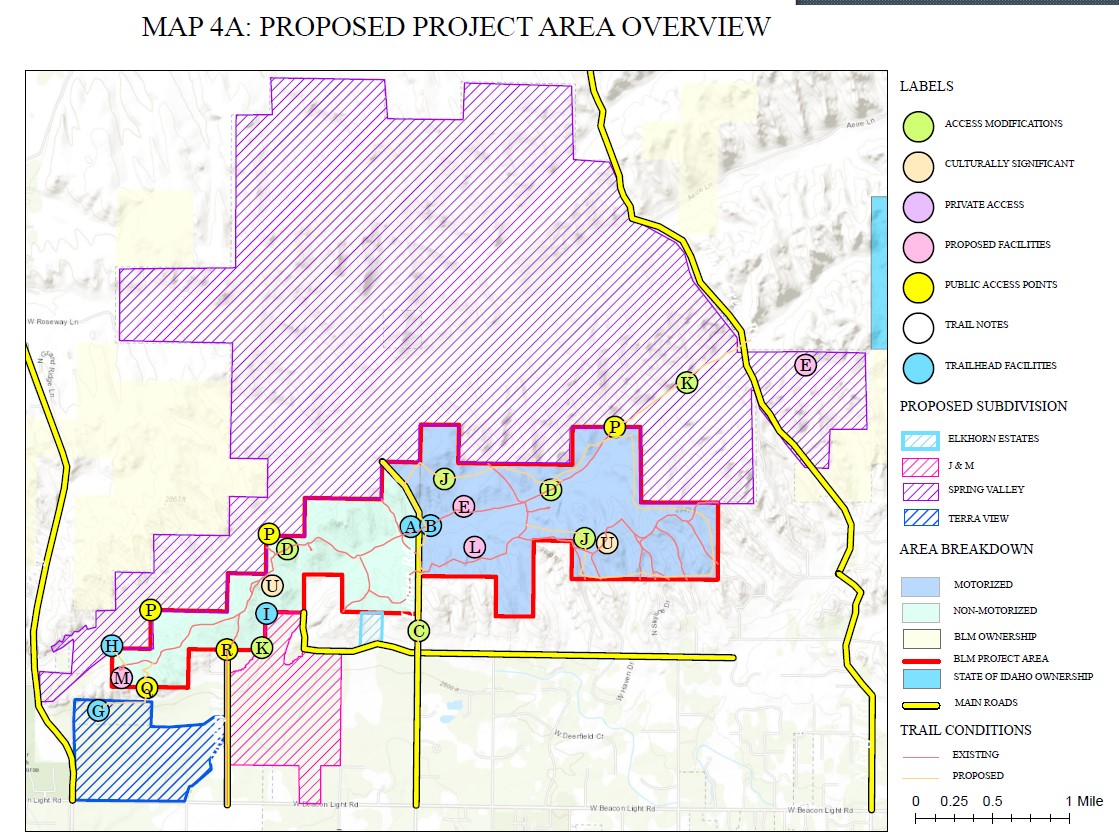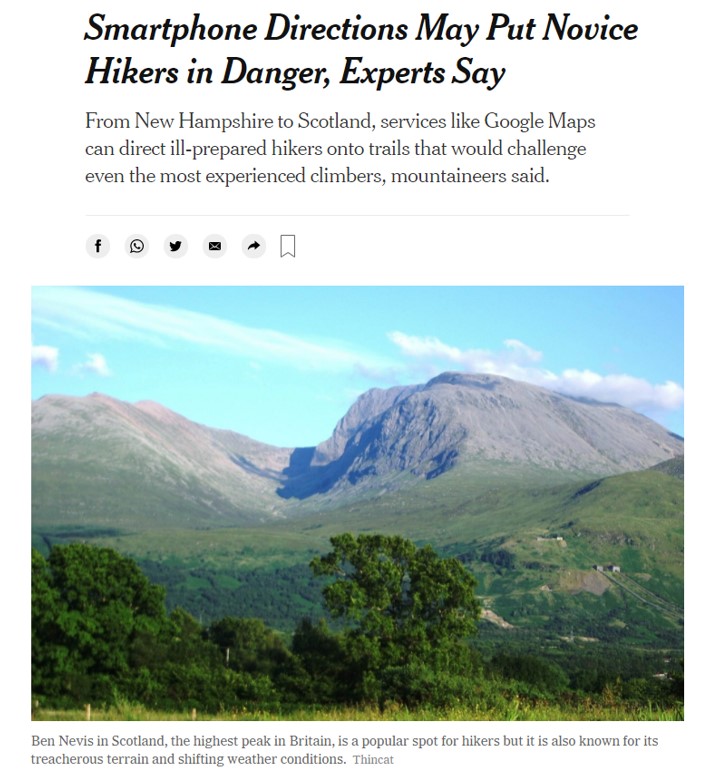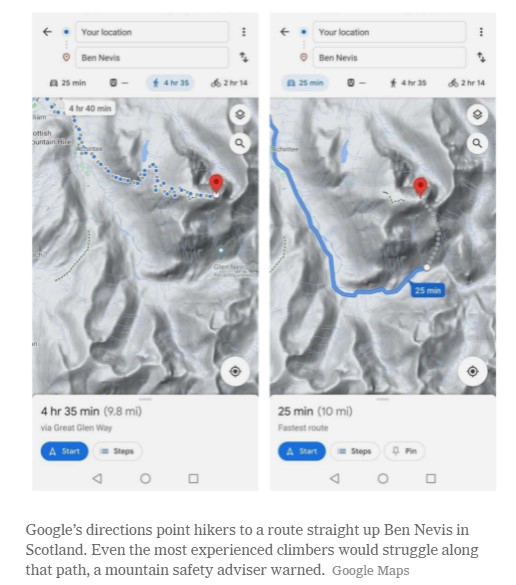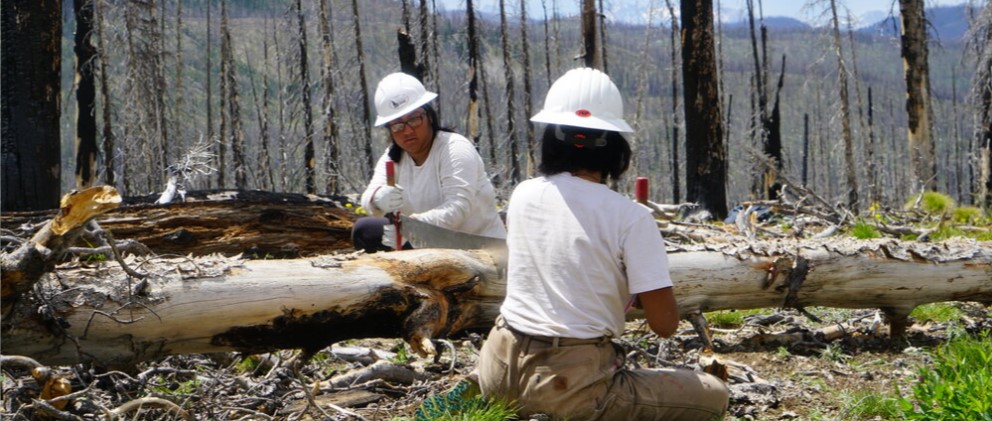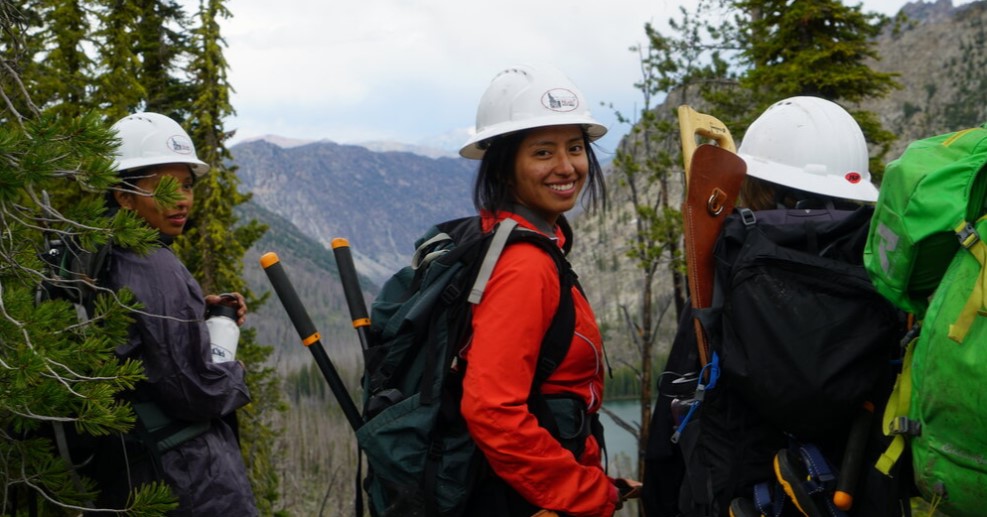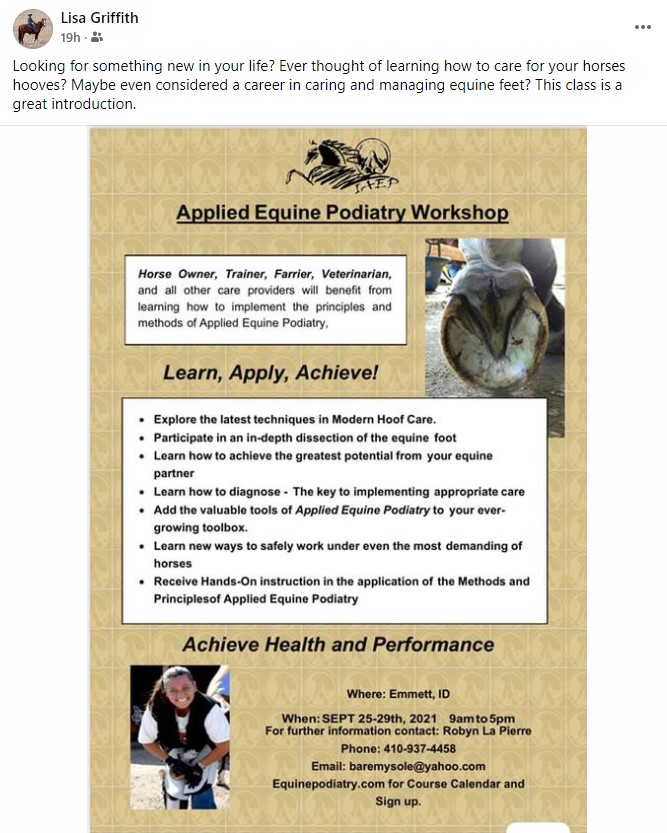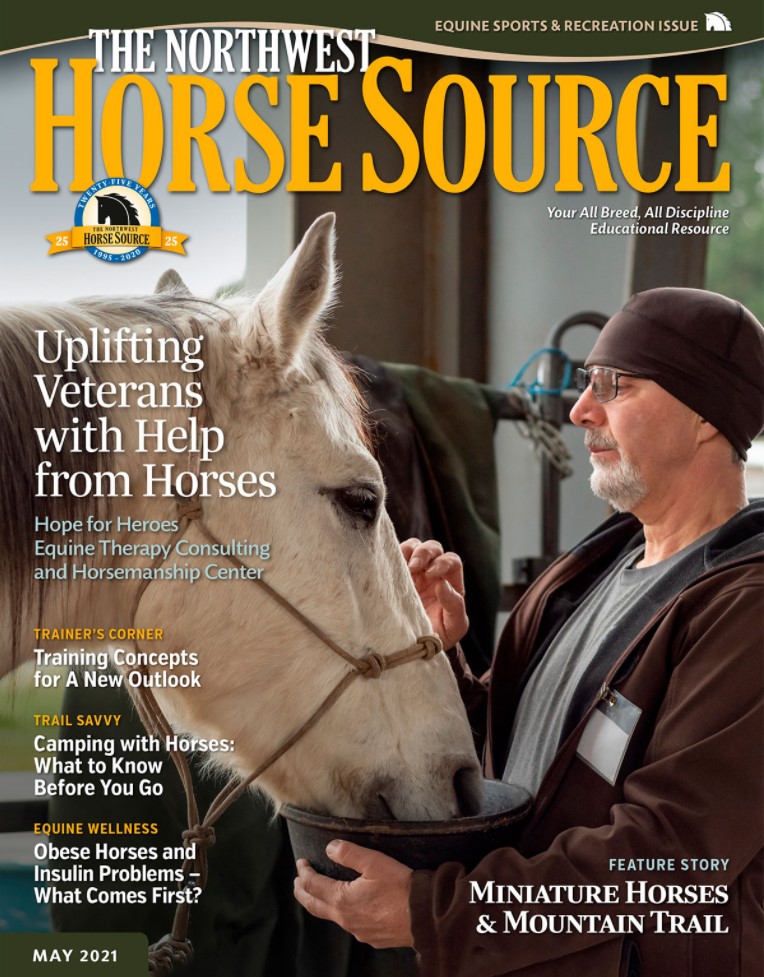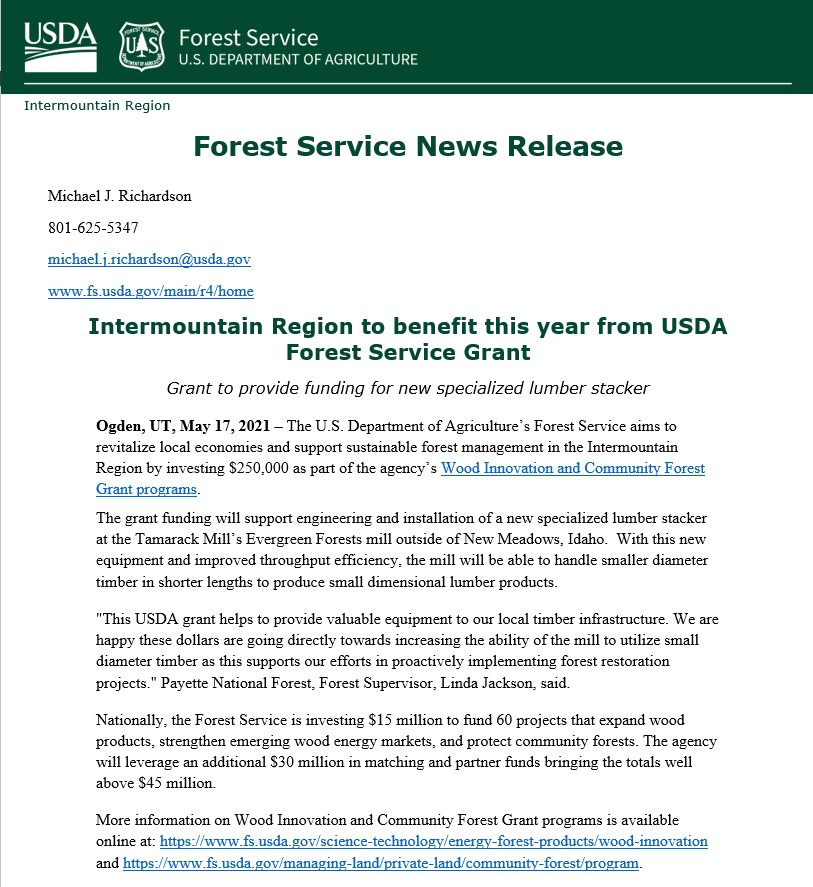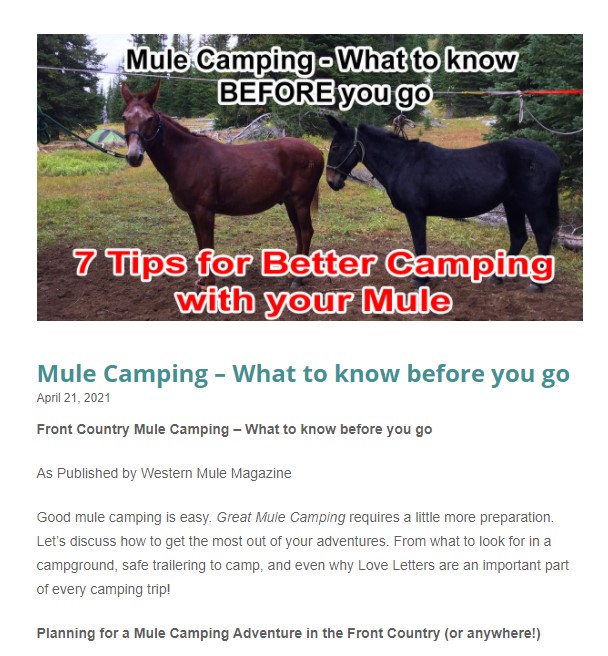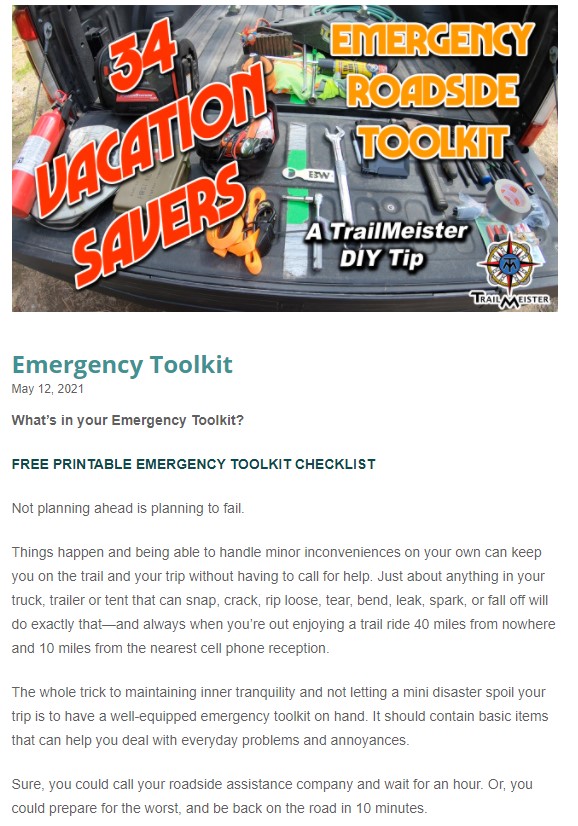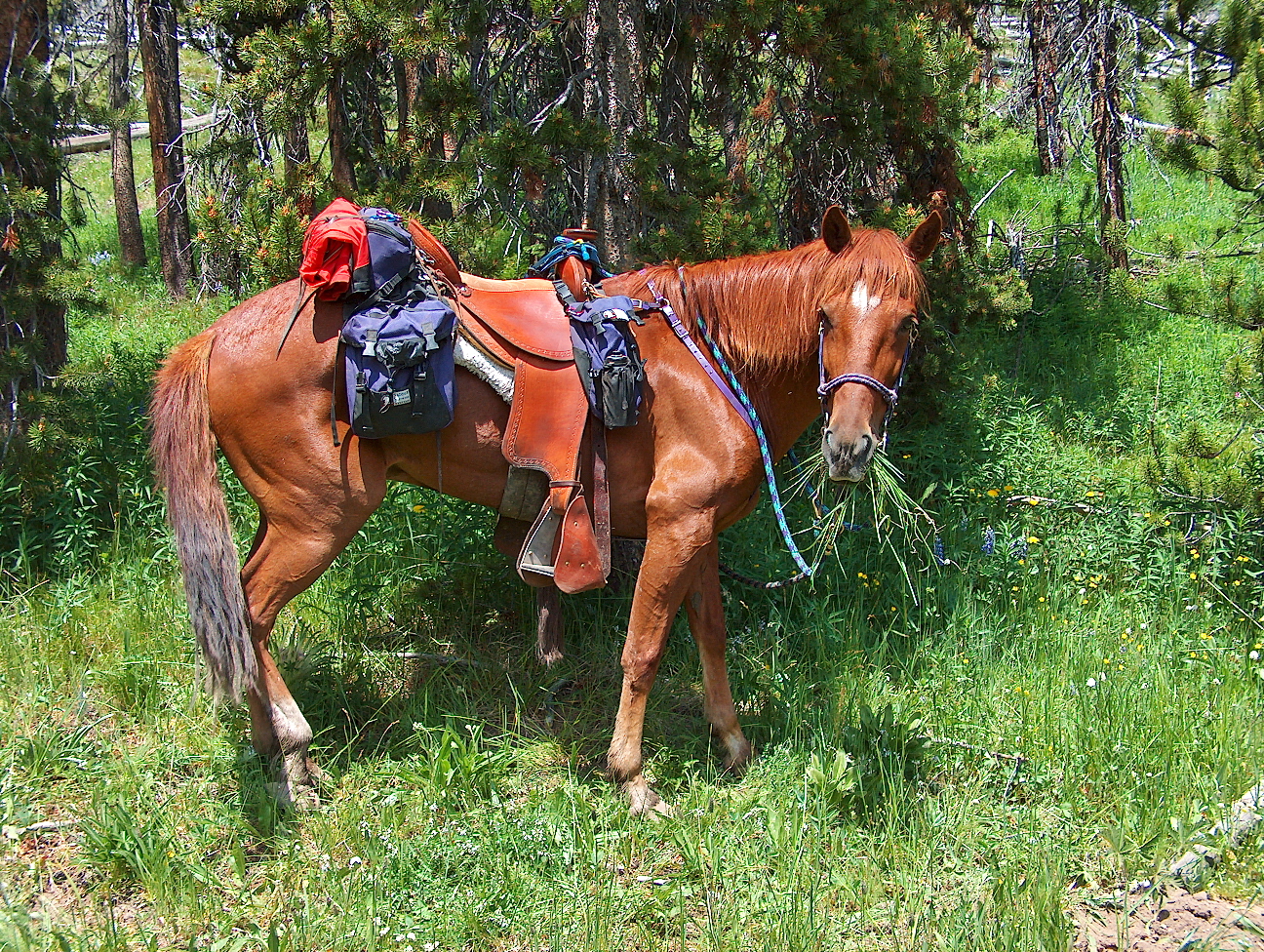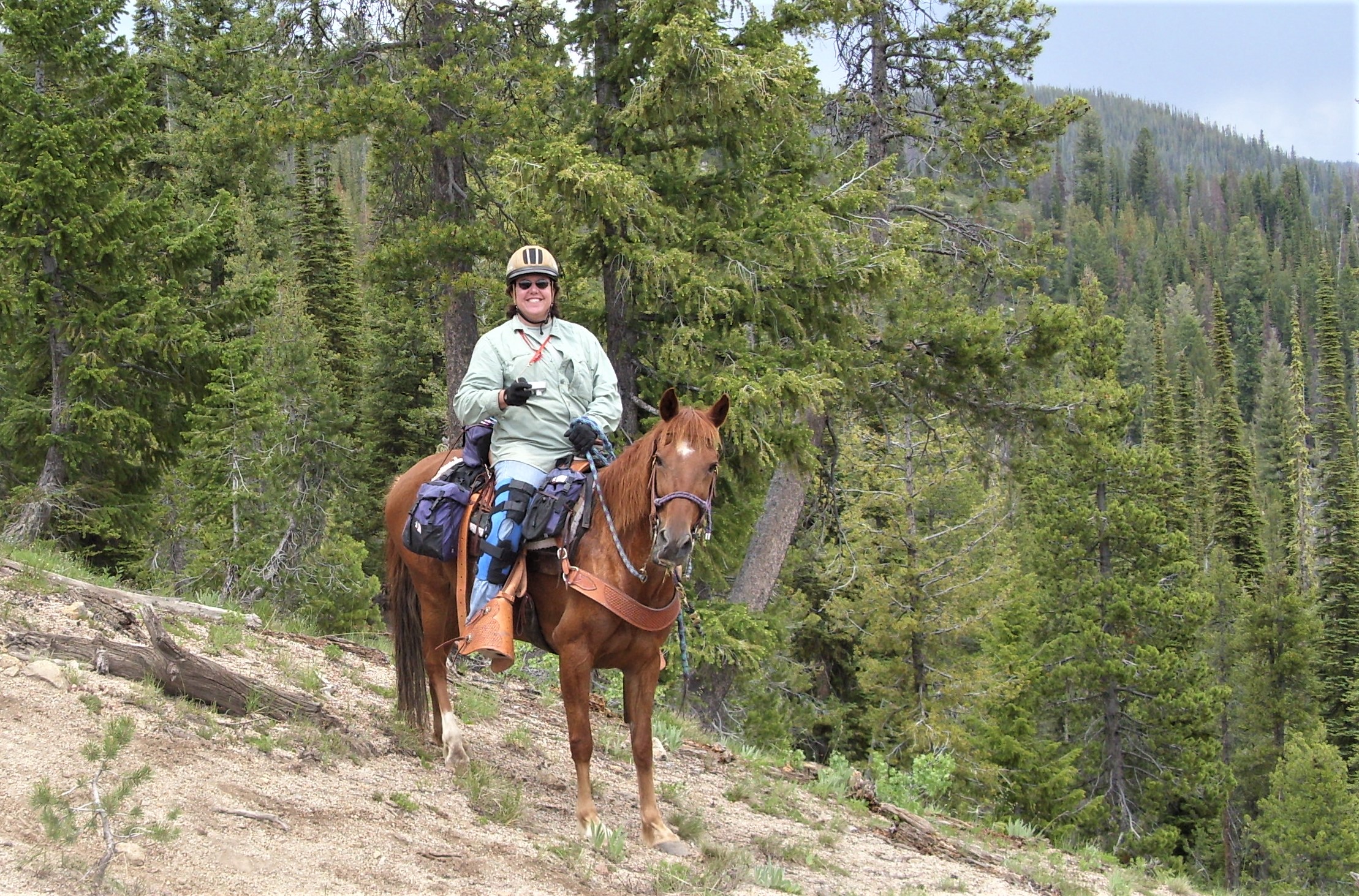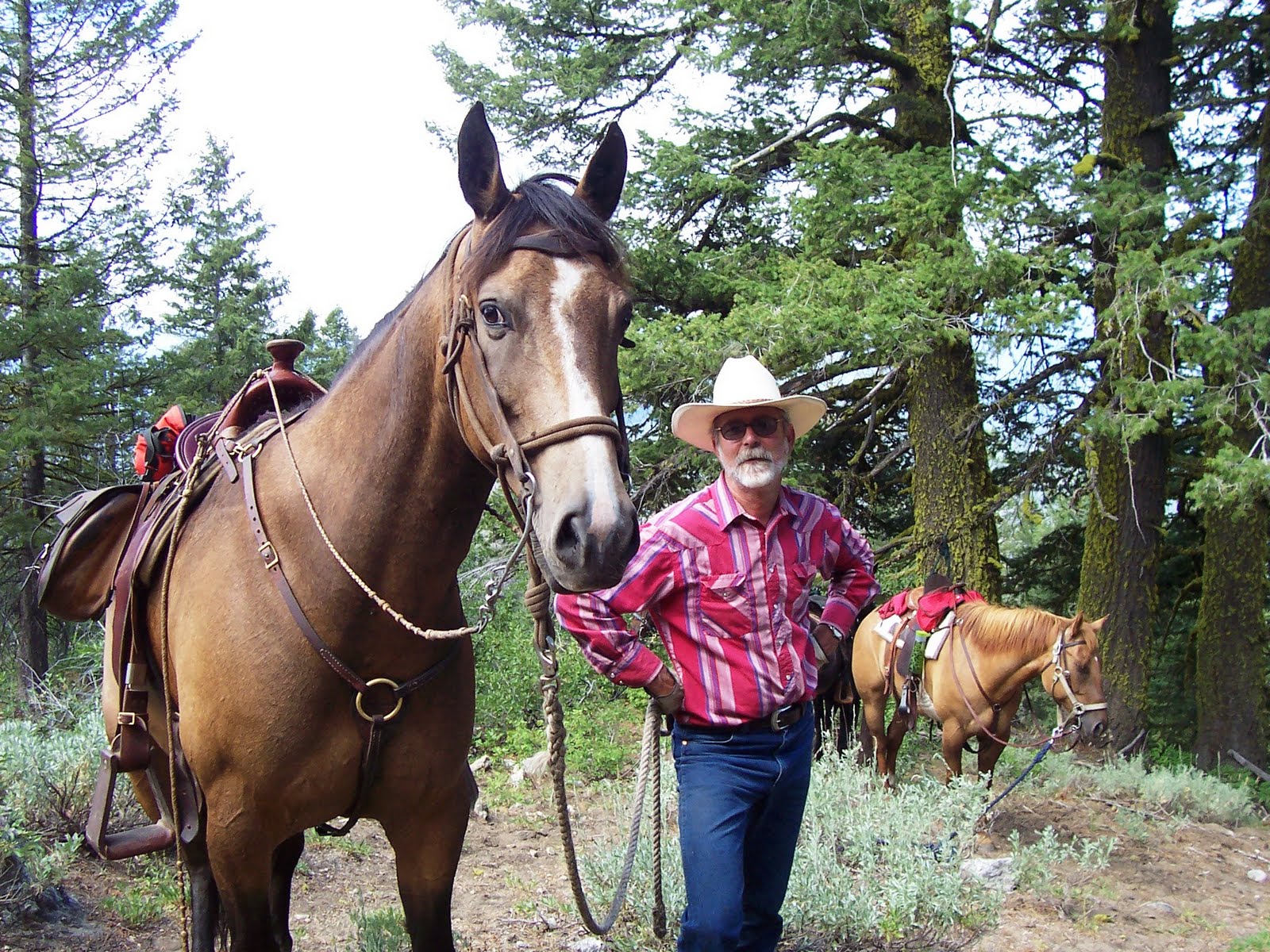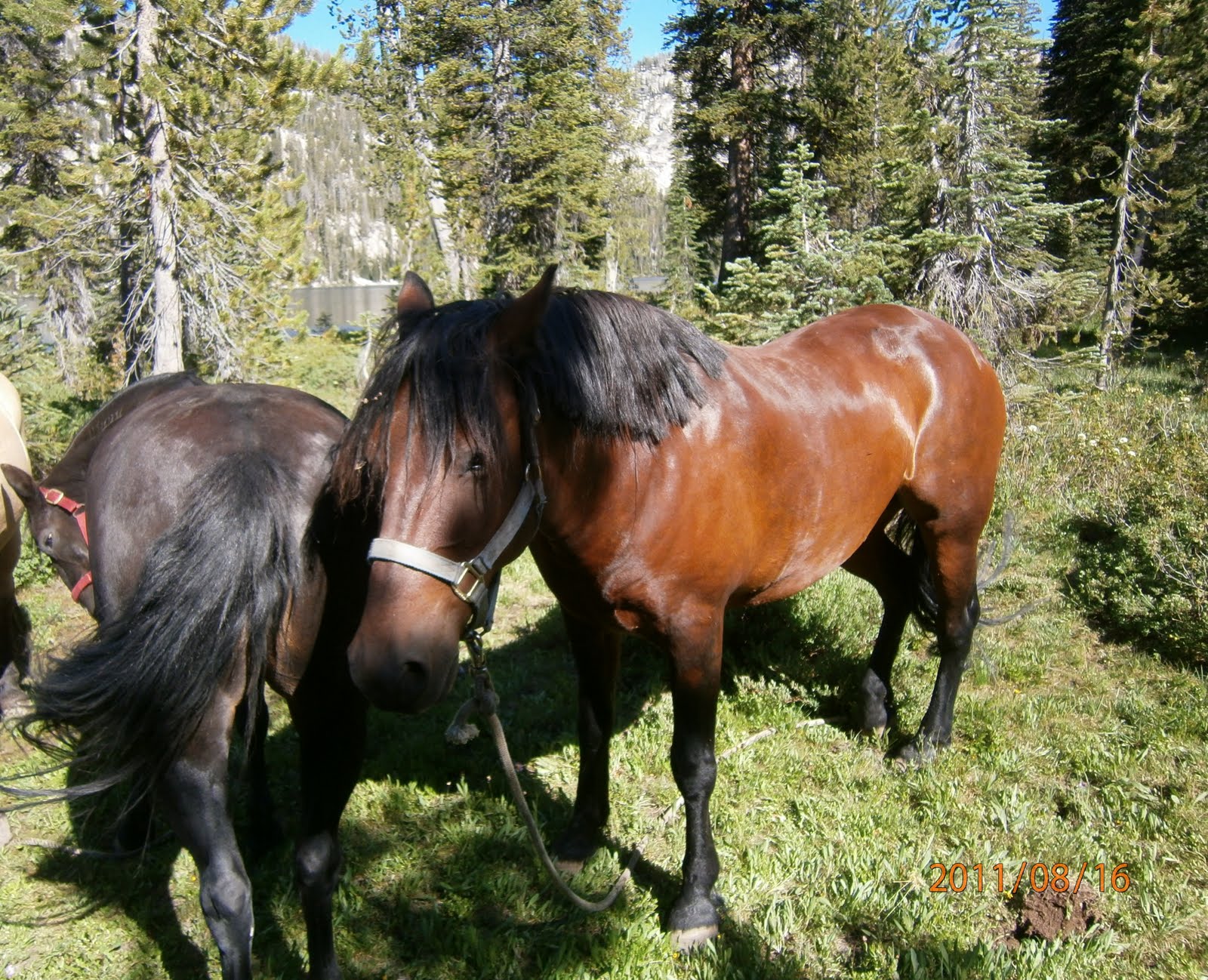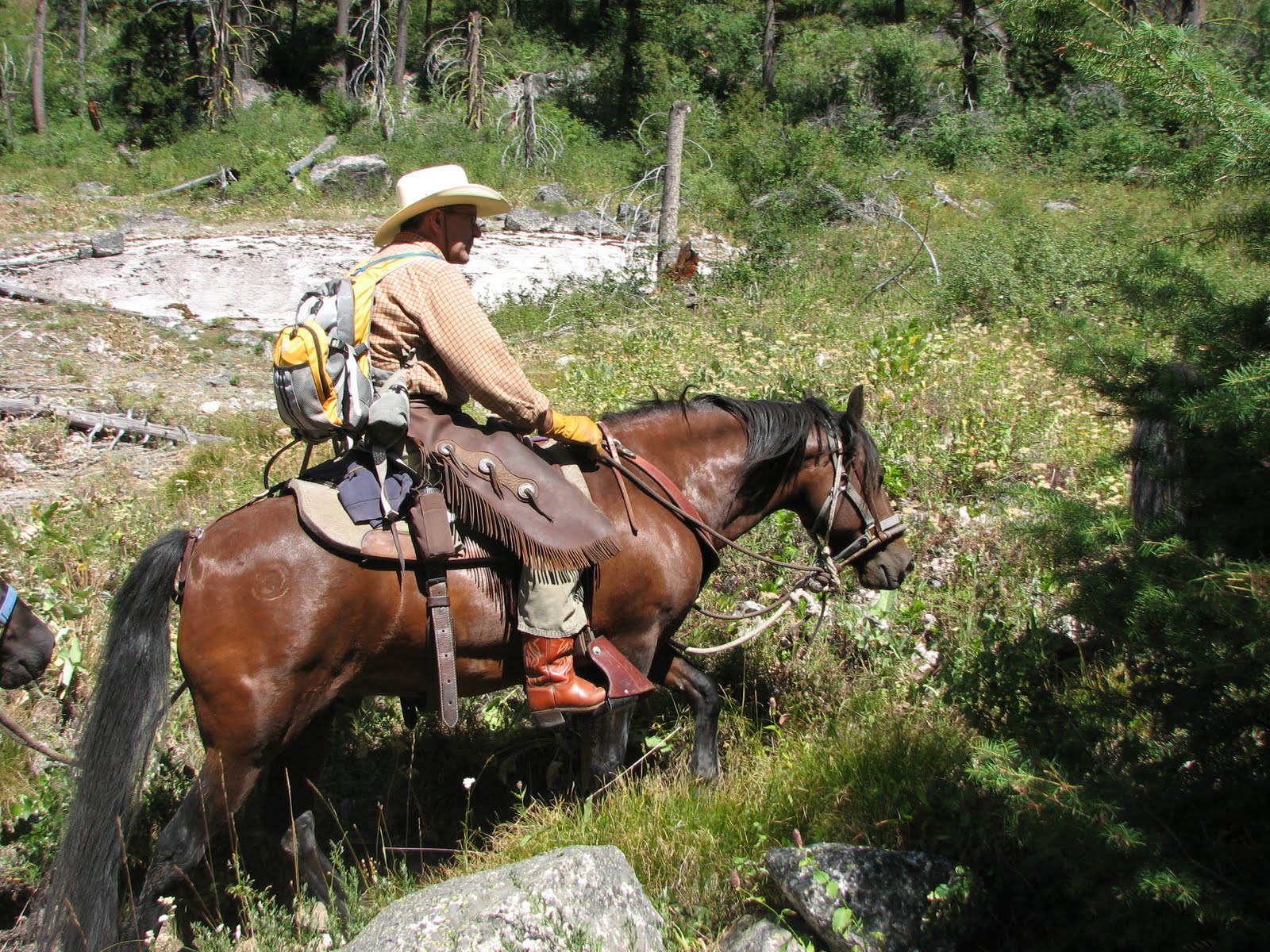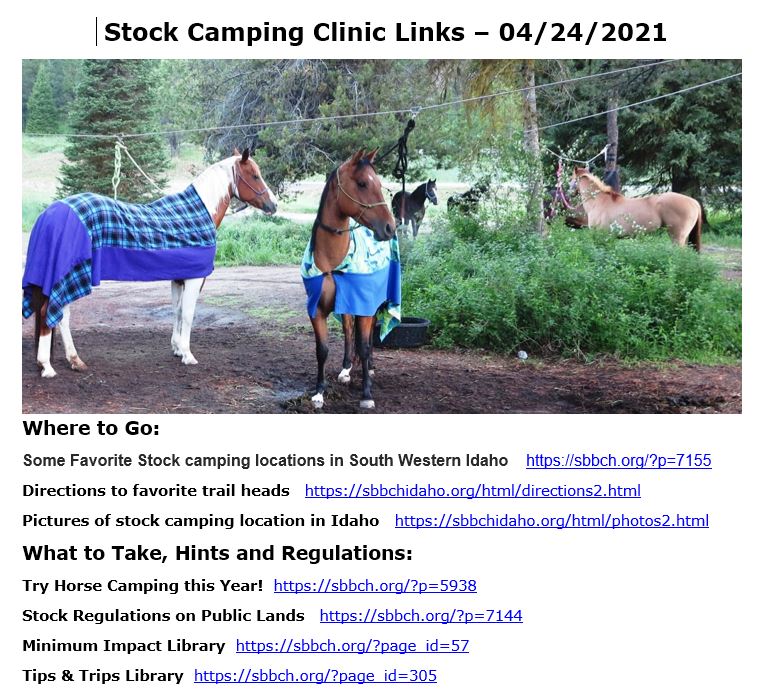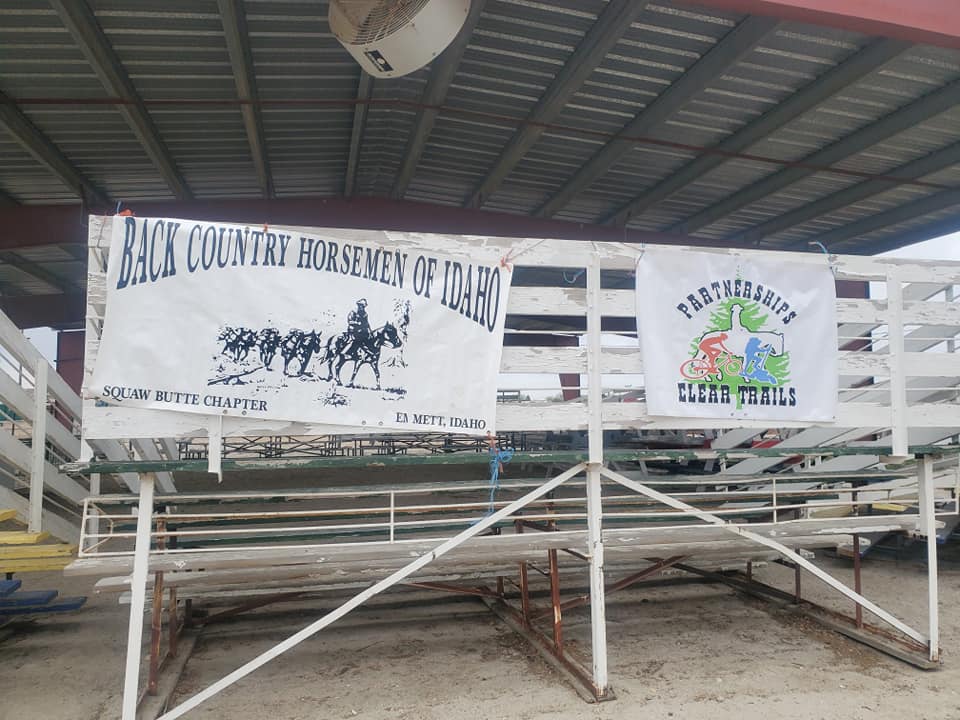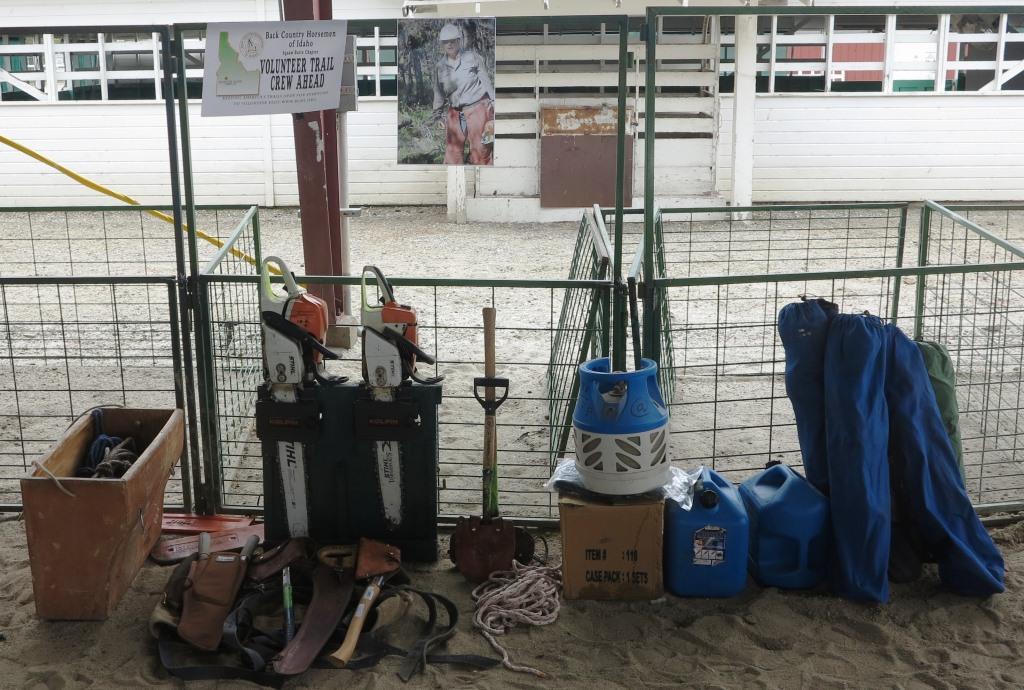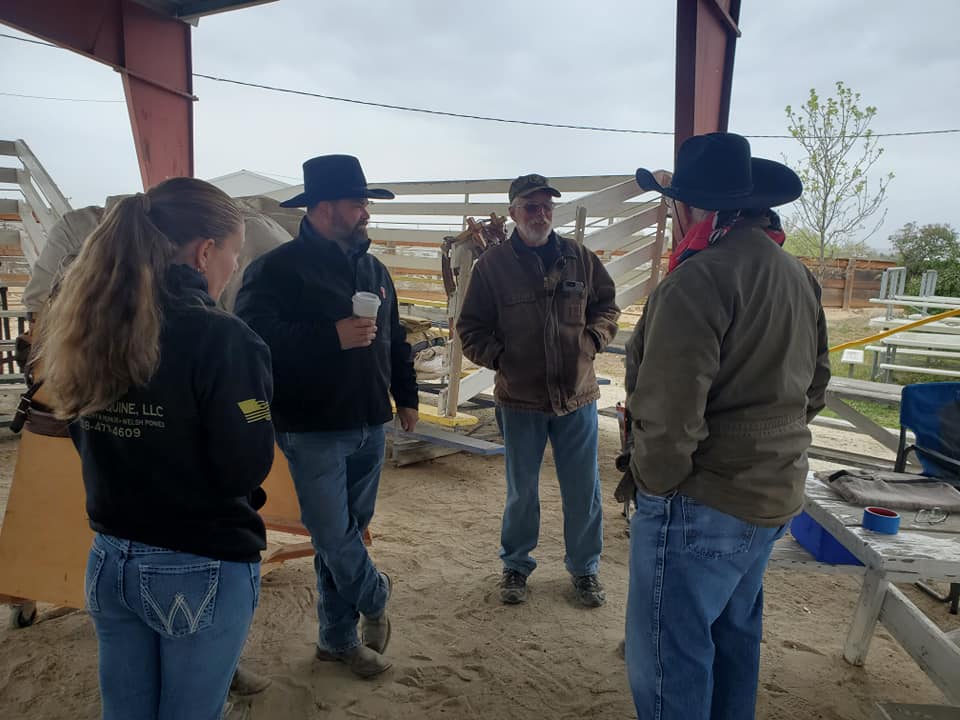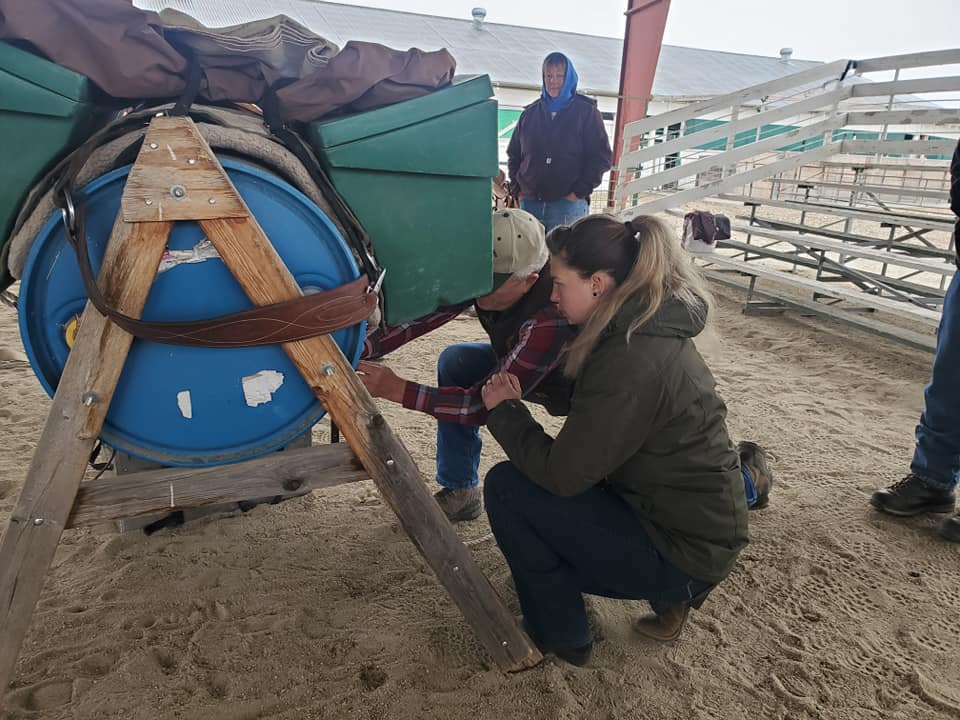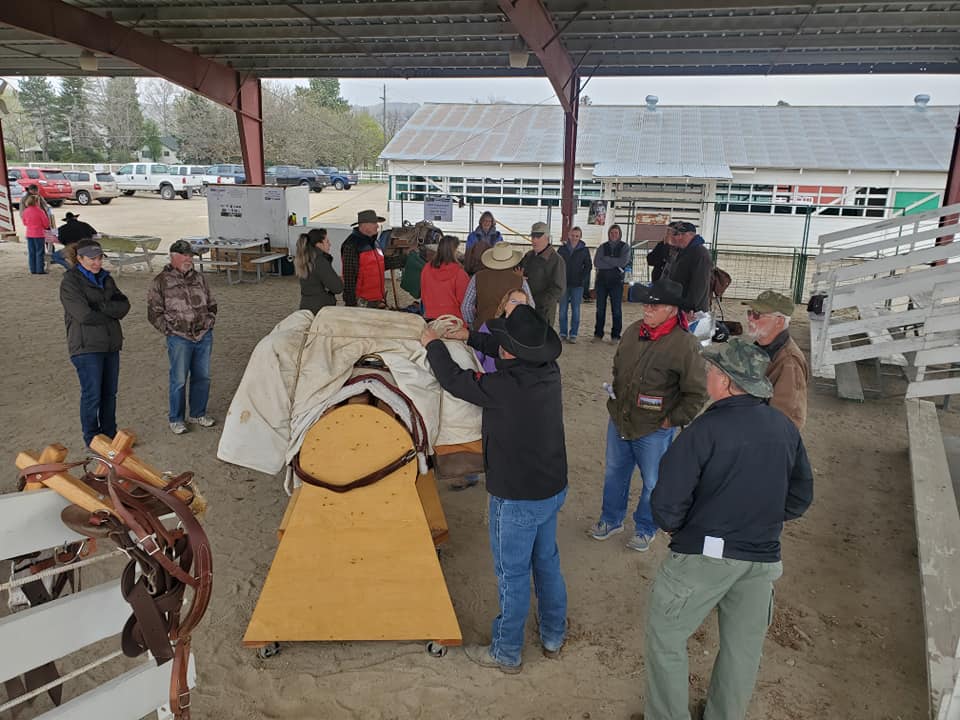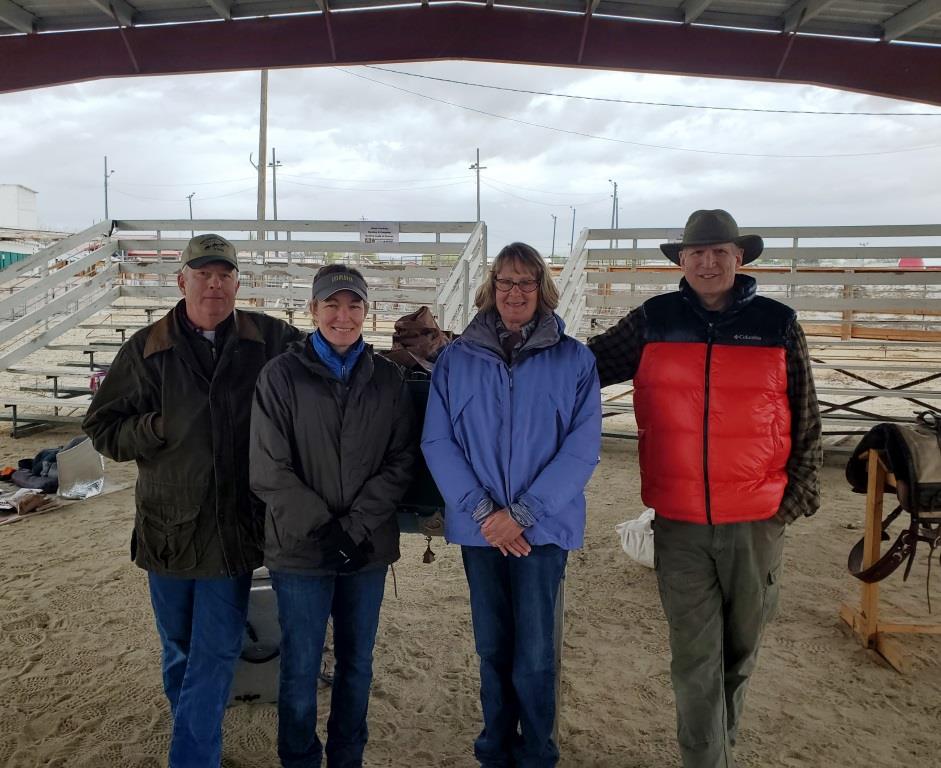The Idaho Department of Parks and Recreation (IDPR) hosted three (3) summits to discuss issues and solutions pertaining to non-motorized trail recreation in Idaho. The discussions were held in Boise, Coeur d’Alene and Idaho Falls. Below are the meeting handouts and minutes from each location. The open discussions explored all topics pertaining to non-motorized trail recreation in Idaho and ideas for solving the non-motorized trail funding gap.
Boise – February 11, 2016
Boise, January 11, 2017
A meeting was held January 11, 2017 to share results of the 2016 summits and to organize a leadership team, willing to take suggestions and strategies through the next very important steps. Download the meeting materials.
Summit Attendees
A complete list of summit attendees is available for download here.
Next Steps – Use collective report and results from statewide summits to answer the following:
- Is there a need to address non-motorized trail maintenance in Idaho?
- Is there enough support statewide to address non-motorized trail maintenance and related funding in Idaho?
- Who will work together to address the need?
- What does addressing the need look like?
- What are the necessary actions / future next steps?
Want to take a leadership role? Have questions?
If you have questions, would like to lead in next steps, or were unable to attend a summit in your area, you can share your thoughts and ideas via email: inquiry@idpr.idaho.gov
The 1,311-mile Idaho Centennial Trail (ICT) weaves through the most scenic portions of Idaho’s wild country, from high desert canyonlands in southern Idaho to wet mountain forests in North Idaho.
Designated the official state trail during Idaho’s Centennial year in 1990, the southern portion of the trail begins at 6,000 feet near Murphy Hot Springs on the Idaho/Nevada border. Heading north, the trail descends to 2,500 feet at the Snake River near Glenns Ferry. The trail yo-yos up and down through the mountains of Central Idaho between 3,000 and 9,000 feet. At its low point (1,900 feet above sea level) the trail skirts the Selway River near the Moose Creek Guard Station then climbs again to high points up to 6,000 feet in the Cabinet and Selkirk Mountains as the trail approaches the northern boundary.

Idaho offers some of the most pristine wilderness areas in the lower 48 states. Follow a trail through 6,000 foot river canyons, hike to crystal alpine lakes or jagged peaks, or find solitude on thousands of miles of hiking trails in Idaho’s designated wilderness areas, two of which (the Frank Church and Selway Bitteroot Wilderness areas) are the largest in the lower 48 states. Some of the most popular wilderness areas for hiking include:
- Sawtooth Wilderness
- Frank Church-River of No Return Wilderness
- Owyhee River Wilderness Area
- Selway-Bitterroot Wilderness
- Gospel Hump Wilderness
- Hells Canyon Wilderness
Another good tool to find information about Wilderness Areas in Idaho is Wilderness.net.
WHY Trails provide access to Idaho. Trails are part of Idaho’s recreation heritage, providing paths to camping, fishing and the wild places that make the Gem State great. We already have one of the most effective motorized trail maintenance programs in the country, supported by user fees. But the needed resources to maintain trails for hiking, biking and horse riding are lacking. And without adequate maintenance and improvements, access to some non-motorized trails will be lost.
The stickers are now available in person at:
- REI in Boise
- JD’s Bodega in Boise
- IDPR HQ Office in Boise
- George’s Cycles (both Boise locations)
- Hyperspud Sports in Moscow
- Idaho Mountain Trading in Idaho Falls
- IDPR East Region Office in Idaho Falls
- IDPR North Region Office in Coeur d’Alene
- Massacre Rocks State Park in American Falls
- Winchester Lake State Park in Winchester
- Bruneau Dunes State Park in Bruneau
- Lake Walcott State Park in Rupert
- Hells Gate State Park in Lewiston
- Ponderosa State Park in McCall
- Heyburn State Park in Plummer
- Dworshak State Park in Orofino
- Farragut State Park in Athol
- Lake Cascade State Park in Cascade
Inside the powerful, elusive animal roaming Idaho’s forests
 The wolverine is an animal roaming Idaho that you’ve probably never seen – but you might have wondered, ‘what are they, exactly?’
The wolverine is an animal roaming Idaho that you’ve probably never seen – but you might have wondered, ‘what are they, exactly?’
Only 300 are estimated to be left in the lower 48 – mostly in Idaho, Oregon, and Washington. It’s also the mascot of several Idaho schools including Wood River Valley High School in Hailey. READ MORE
North American Wolverine
The North American wolverine (Gulo gulo luscus) is a medium-sized, solitary carnivore adapted for digging, climbing, and traveling long distances in deep snow during the winter. Since the wolverine is a highly elusive creature, the 2018 Species Status Assessment (SSA) mapped the current potential extent of occurrence for the North American wolverine spanning through Washington, Oregon, Idaho, Wyoming, Montana, Alaska, and Canada. As mentioned in the SSA, the wolverine occupies a variety of habitats including Arctic tundra, subarctic-alpine tundra, boreal forest, mixed forest, redwood forest, and coniferous forest.

Stock use rules in BLM and USFS-managed wilderness.
One of the most common categories of rules in wilderness is rules associated with stock use. Stock rules can include feed requirements, party size limits, camping setbacks from water and/or trails, grazing restrictions, as well as stock restrictions to certain trails or outright prohibition of stock. This research describes the frequency of stock rules in wilderness areas managed by the BLM and USFS. Additionally, the differences associated with the rules that are included in Wilderness Character reports as well as how they are weighted are also explored.
C. “Griff” Griff is a Professor in the Biology Department at Grand Valley State University. Her research focuses on unconfined recreation in the National Wilderness Preservation System.
Randy Rasmussen, Public Lands Policy Expert for the Back Country Horsemen of America will also participate in this discussion with a horseman’s perspective.
National Wilderness Stewardship Alliance
One of the most common categories of rules in wilderness is rules associated with stock use. Stock rules can include feed requirements, party size limits, camping setbacks from water and/or trails, grazing restrictions, as well as stock restrictions to certain trails or outright prohibition of stock. This research describes the frequency of stock rules in wilderness areas managed by the BLM and USFS. Additionally, the differences associated with the rules that are included in Wilderness Character reports as well as how they are weighted are also explored.
C. “Griff” Griff is a Professor in the Biology Department at Grand Valley State University. Her research focuses on unconfined recreation in the National Wilderness Preservation System.
Randy Rasmussen, Public Lands Policy Expert for the Back Country Horsemen of America will also participate in this discussion with a horseman’s perspective.
Contact Lisa Ronald lisa@wilderness.net if you have a question.
This App will not replace a satellite beacon service rescue device like inReach or Spot, but is a very useful low cost tool that should be part of every back country riders tool kit.
Val Baker Jonhson, husband, father, brother, friend, grandfather, packer, mule-man, teacher, and political scientist passed away Friday morning, November 12, 2021, at Grace Assisted Living in Twin Falls, Idaho with his family by his side.
Val was born in Nampa, Idaho on March 6, 1941, to Marie Baker and Lafe Gwilliam Johnson. He was raised in Cascade and joined by sister Sharon and later, brother Joe. Being older, Val was their caregiver and backbone of the family for many years. As a youngster, he traveled to the backcountry with his dad, uncles, grandpa, and grandma to the Snowshoe Cabin area, many summers herding sheep.
Val graduated from Cascade High School in 1959 and went to Brigham Young University that fall. The second semester he tried the University of Idaho but did not like beer, so transferred back to BYU and graduated in 1963 with a degree in Political Science. Figuring he would get drafted, he enrolled in the US Air Force Officer Training School in San Antonio, Texas in November of 1963. Thereafter, he was assigned to Strategic Air Command (SAC) HQs at Offutt Air Force Base in Omaha, Nebraska as a 2nd Lt. Photo Intelligence Officer. It was here that he met Stephen P. Mealey with whom he would later partner and run an outfitting and guide business in Salmon. Val was sent to Vietnam from December 1965 until December 1966. Upon his return, in his new blue GTO with white leather interior, he made it to Offutt AFB for a New Year’s Eve party where he first met Sara Lee McConnell, also an AF Intelligence Officer.
Val and Sara were married on June 9, 1967, at the Offutt AFB Chapel. Their USAF obligations were met within two weeks of each other in February of 1968 at which time they moved to Salmon, Idaho, and with Steve Mealey, started Nez Perce Outfitters and Guides. Big-game hunting and summer float and pack trips were the results. Val and Sara bought 120 acres on the Salmon River, which was ideal for keeping pack string animals and later Hereford cows and pigs. Val and Steve sold the outfitting business in 1971 and Val opted to go to Idaho State University to get his teaching certificate in Social Studies. He kept the float business for a few years and continued his many backcountry explorations.
Daughters Laurie and Suzie were born in 1968 and 1969, respectively, and they all lived in the old log house. The pastures were irrigated via ditches from a pipeline just south along the Salmon River. Wheel lines were added when the kids were gone! In 1971, they built a house east above the highway, and Erik came along in 1974.
For the 25+ years that Val taught at Salmon High School, his voice rang through the hallways. The relationships that he developed with students and faculty went beyond the classroom and continued throughout his life.
In 1978, Val was instrumental in joining three Montana state chapters of Back Country Horsemen, with a newly formed Salmon River Back Country Horsemen, the first in Idaho. Val, Dave Couch, and Richard Smith were the visionaries for the future Back Country Horseman of America. Now in 2021, there are 212+ chapters in 32 states with roughly 13,000 members throughout the US and Canada.
Val’s extreme love of the backcountry and his mules were part of his DNA. His favorite mule, Reuben, carried him thousands of miles and still carries his grandchildren today. He shared his appreciation of mules, hunting, and the backcountry with his children and grandchildren. Lick Creek hunting camp and fellow riding companion stories abound to this day.
From plaza backgammon games in Turkey, travel to India, visiting Suzie wherever she was stationed, 30 days with Cole in South Africa, rodeoing with Erik, and attending high school sports with grandchildren, Val so enjoyed seeing different places and varied cultures. In 2009, Val and Sara purchased a second home in Arizona, where his pace slowed to the desert and warmer climate.
Val is survived by wife Sara of 54 years; daughter Laura Marie (Bill) Lickley of Jerome, Idaho, grandchildren Valene Marie Lickley and Cole Johnson (Anna) Lickley; daughter Suzanna Kay Hardy and grandsons Andrew Johnson Hardy and Kyle William Hardy; and son Erik McConnell Johnson of Eltopia, Washington, and grandchildren Tiegan Grace, Tessa Faith, and Traver Imes Johnson. He is also survived by his sister Sharon (Joe) Stippich of Weiser and half-brother Joe (Marla) Worthington of Red Oak, Iowa.
In lieu of flowers, the family suggests donations be made to the Salmon Public Library or your favorite educational or outdoor charity in memory of Val.
BCHA Announces 2012 Legacy Award Winner
Back Country Horsemen of America leads the nationwide effort to preserve trails for horse use, not only for today’s equestrians, but also for tomorrow’s. They seek to leave an inheritance to future generations; a legacy of responsible enjoyment of America’s wild lands the way our forefathers did: by horseback.
With that goal in mind, Back Country Horsemen of America selects an individual member each year whose numerous contributions, made over many years of dedicated membership, exemplify their mission and values. In 2012, BCHA chose Val B. Johnson of the Salmon River Chapter of Back Country Horsemen of Idaho.
There From the Start
Val was an organizing founder of Salmon River Back Country Horsemen in Idaho in 1978, the fourth group in the original BCH organization, and the first outside of Montana. Val joined the presidents of the three Montana groups (the Flathead, Missoula, and Bitterroot BCH), to outline a proposal for uniting the existing groups into a formal organization. The presidents presented their plan at the first BCH annual convention in Kalispell, Montana, on March 17 and 18, 1979.
That weekend, Back Country Horsemen was born, with stated purposes that Val helped draft: 1) to perpetuate the common sense use and enjoyment of horses in America’s back country and wilderness; 2) to work to ensure that public lands remain open to recreational stock use; 3) to assist the agencies responsible for the management of public lands; and 4) to educate, encourage and solicit active participation in the wise and sustaining use of the back country resource by horsemen and the general public commensurate with our heritage. Over the years, slight updates were made, and a fifth was added: to foster and encourage the formation of new state Back Country Horsemen organizations.
In March, 1983, Val was elected Vice Chairman of Back Country Horsemen. He took the Chairman’s seat a year later, with the goal of affiliating with Washington Back Country Horsemen and the High Sierra Stock Users Association of California. Val was also very involved in the drafting of the BCHA constitution, which was adopted in 1986 by representatives of the groups in Montana, Idaho, Washington, and California. The organization officially became Back Country Horsemen of America.
In 1989 and 1990, Val was again elected Chairman. He served on the BCHA National Board of Directors through 1991, and again from 1999 until 2011. Val was also Chairman of the Visions Committee for a number of years, and the unofficial historical and constitutional watchdog.
Many Roles of Service
Born in Nampa, Idaho, and raised in Cascade, Val spent his early years with his father and grandfather at Snowshoe Cabin at the head of Pistol Creek in the Idaho Primitive Area. After college in Utah, he worked one year as the Sulphur Creek Patrolman on the Landmark District of the Boise National Forest. That fall, he attended Officer Training School and was commissioned a Second Lieutenant in the United States Air Force. He served in Vietnam from December 1965 to December 1966 as an intelligence officer.
Upon returning from Vietnam in 1967, he and a fellow officer from Oregon bought an outfitting and guiding business, offering big game hunts and summer float and pack trips out of Salmon. They sold it in 1971, but retained the summer float and pack trip portion of the business. After earning a teaching certificate, Val began teaching social studies in the Salmon High School in 1972.
Driven by his love for the former Idaho and Salmon River Breaks Primitive Areas, along with the Middle and Main Salmon Rivers, Val became involved with the management of those areas, and eventually became dedicated to promoting the use of horses and mules on public lands.
About Back Country Horsemen of America
Back Country Horsemen of America commends Val B. Johnson of the Salmon River Chapter of Back Country Horsemen of Idaho for his outstanding example of commitment and dedication to the vision and principles of BCHA. They encourage horsemen from coast to coast to allow his accomplishments to be an inspiration and encouragement to achieve their goals for protecting our right to ride horses on public lands.
BCHA is a non-profit corporation made up of state organizations, affiliates, and at-large members. Their efforts have brought about positive changes regarding the use of horses and stock in the wilderness and public lands.
The Kennelly Creek weekend project scheduled for September 18 is generally a popular and well attended project. This weekend for various reasons it was not! Rob Adams plus three other members signed up for the project. On Thursday one dropped out and one said that they would be coming up early Saturday morning. On Friday, I packed up my trailer loaded, the newly prepped saws and gear and around noon headed up 55 towards Donnelly, ID. I turned on to Paddy Flat road and when the surface changed from paved to gravel, stopped and put my truck in low range 4-wheel drive for the climb up to Paddy Flat summit. Paddy Flat road is a good US forest service type road that winds along hill sides with the first section on private land holding that has had some logging or thinning this summer. There are some very narrow spots but there are generally good places to pass along the road if you go slow and watch for oncoming traffic. Wood gathering and hunting are both going on this time of year, to there is more traffic than is typical on a week day. The drive into the trail head is 13 miles and at mile 7, I came around a blind corner and saw a small SUV pulling a heavily loaded single axel trailer up the middle of the road towards me. What I expected to happen was he would pull over against the hill side and we would sneak past each other and continue on our way. What happen is he did move over a bit and I got my trailer straight behind the truck as far over as I felt safe. Watching the mirror it looked like we might make it. At the last minute he slammed on his brakes and I tried to get my rig stopped before we hit. I was about a foot long, folding his trailer fender up, cutting gashes in both his and my trailer tires.
We had him back up a bit and I could get by and then we surveyed the situation and started working on his trailer first.
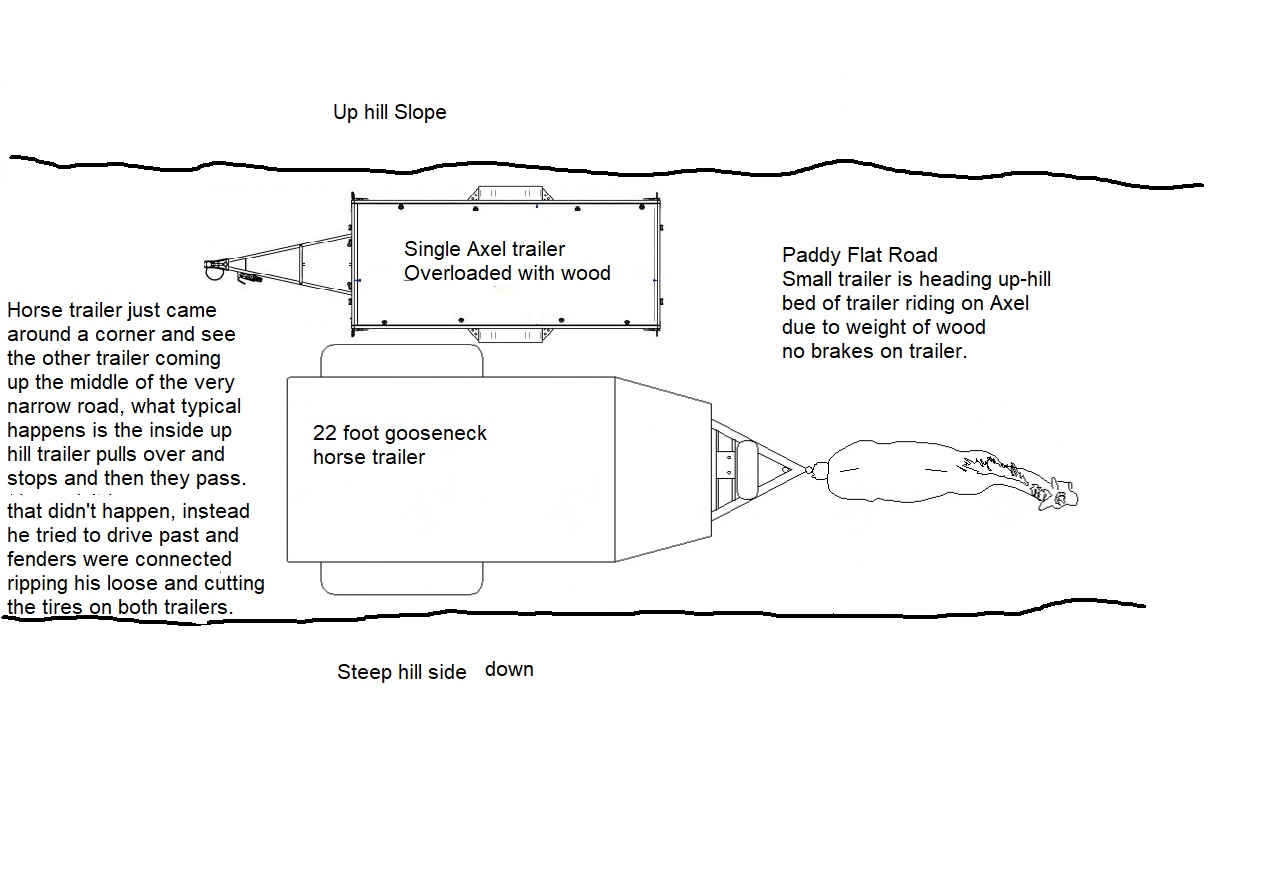 His tire needed to be changed which required jacking up his trailer, His jack would not do the job, but I had stuff to help get that done, once the tire was off, it became clear that the front mount on the axel spring had broken so it was likely that the axel could fold up under the trailer. We rigged a chain to hold it in place, used a big hammer to get the fender out of the way and installed a spare that he hoped would get him to McCall. He promised to go really slow and I know for a fact he made it into town. I took my spare off the front of the trailer and swapped out the wrecked one and 30 minutes later was at the camp ground.
His tire needed to be changed which required jacking up his trailer, His jack would not do the job, but I had stuff to help get that done, once the tire was off, it became clear that the front mount on the axel spring had broken so it was likely that the axel could fold up under the trailer. We rigged a chain to hold it in place, used a big hammer to get the fender out of the way and installed a spare that he hoped would get him to McCall. He promised to go really slow and I know for a fact he made it into town. I took my spare off the front of the trailer and swapped out the wrecked one and 30 minutes later was at the camp ground.
I was the only one there, a surprise, it being a Friday afternoon. At 18:30 I grilled a pork chop and by 21:00 it was getting dark and cool, so said good night to the stock and crawled in by bag to read a book before going to sleep. Around 21:30 two pickup came into the camp ground and set up tents, but none with horse trailer.
At 07:30 on Saturday I got up, fed the stock, made some breakfast and then packed up my camping stuff as I planned to head home at the end of the day as a front was expected. By 09:30 I was all saddle and had the equipment packed on my mare and happened to look down at the tire next to where Payette was tied. It was nice and round on top and totally flat on the bottom. $H!T!!!, every back country horsemen nightmare is two trailer flats on the same trip!. I knew it was ok on Friday, but assumed it was also damaged by the fender-bender.
On to plan “B”, I un-saddled the stock and put them back on the high-line with some more certified hay so they were happy but confused. Disconnected the truck and headed with the slashed tired to McCall with hopes of getting a new one mounted. Les Schwab had what I needed and had one mounted and balanced in about 30 minutes and it was back to the trail head. Still no other horse trailers. I pulled the second flat to find a big screw in it so it had nothing to do with the fender-bender. Got the new one mounted and then drove out of the trail head had very carefully making sure I could see and could get pulled over if necessary as I passed a number of hunters on 4-wheeler, side-by-sides and trucks. Getting backed to the paved road was a great relief.
Summary of weekend, No trees cut, No brush removed, No nice ride in the mountains. One great pork chop dinner at a very pretty trail head, minor damage to my trailer fender and two very pricey new trailer tires and a new rim so I can carry two spares going forward. Not the best way to end what had been a very successful BCHI season. I do wonder what happened to the other two guys, maybe they have similar story’s.
After six years leading and organizing trail projects across Idaho, Clay Jacobson is leaving ITA for new adventures, including hiking the Continental Divide Trail next summer. We will miss you, Clay and wish you the very best!
ITA is looking for a Trail Projects Director. This person will oversee the planning, coordination, logistics, and successful completion of our trail maintenance and monitoring projects. They will also train and empower volunteer crew leaders to lead projects. This position requires a highly motivated and well-organized trail enthusiast with a variety of skill sets. Click here to see the full job description!
To apply, please submit a cover letter, resume, and the contact information for three references in a single PDF. Send via e-mail to jobs@idahotrailsassociation.org with the subject line “Trail Projects Director” by or before October 8th, 2021.
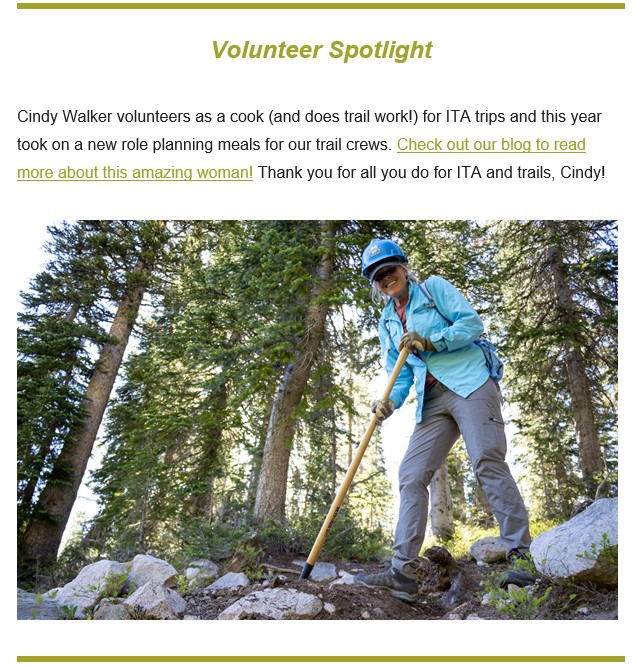

Rocking JB is located in beautiful Central Idaho overlooking the Camas Praire. I am a home based business specializing in hats, coats, shirts, bags, & sweat shirts. I take orders for large and small quantities. I can purchase items for you or I can personalize your own items.
Jackets and Vests with the BCHI LOGO on it. That is something that each individual would need to discuss directly with Julie. (208) 983-2183, rockingjbbags@gmail.com, https://www.facebook.com/RockingJbBagsEmbroidery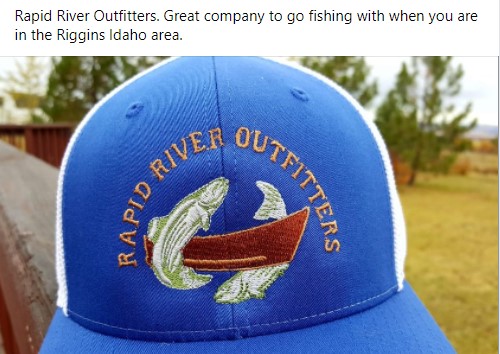
Jan – Leadership Team
Feb – Birds of Prey Fun Ride / Video
Mar – Wilson Creek – China Ditch / Video
Apr – Succor Creek Natural Area / Video
Apr – Camping with Stock Clinic
May – 4 Mile HMA / Video
Jun – Peace Creek
Jun – Cuddy Mountain
Jul – Bogus Basin Sawyer Workshop
Jul – Wilson Corral – West Mountain
Aug – MCC Twenty Mile Creek
Aug – Squaw Creek TR-131 North
Aug – WV Imogene Lake – Sawtooth
@
– Video’s created by Linda Hughes –

As part of the deal to use the 4-H building to hold chapter meeting during the Covid-19 lockdown Squaw Butte agreed to do a presentation at the 2021 Gem County Fair for the 4-H. This presentation was scheduled by the fair for Saturday July 31, at 13:00 in the 4-H building. Phil Ryan and Rob Adams agreed to do a talk on BCHAI and stock camping on Public Lands. Both arrived at 11:00 to get the lay of the land and to make sure they were set up and ready to go at 13:00. After wandering around for while looking for an Information booth or schedule they tried the fair office and were in luck, someone was there and said yes, we were scheduled for 13:00 at the 4-H build, but they were sorry to say they didn’t do event schedules this year an oversite and as the steer, lamb and hog sale was going on it was unlikely we would have many show up. They were right, we had three, a couple enjoying the AC for a few minutes and a young girl who told us about her rabbit. If interested the high steer went for 7,500, the average steer went between 5 & 6 K and prime sheep between 1,500 and 2,000. They had not gotten to hogs before we left.
From the bidding pen to your freezer
So, to summarize: A 1200 steer, ½ inch fat, average muscling, yields a 750 pound carcass. The 750 pound carcass yields approximately:
- 490 pounds boneless trimmed beef
- 150 pounds fat trim
- 110 pounds bone
A specific example of how the 490 pounds of boneless, trimmed beef could break out includes:
- 185 pounds lean trim, or ground beef
- 85 pounds round roasts and steaks
- 90 pounds chuck roasts and steaks
- 80 pounds rib and loin steaks
- 50 pounds other cuts (brisket, flank, short ribs, skirt steak)
Maybe this helps explain how the products from a 1200 pound steer to fit in your freezer!
MINIMUM & MAXIMUM WEIGHTS FOR 4-H MARKET LAMBS FOR THE COUNTY FAIR 4-H MARKET ANIMAL SALE ARE MINIMUM: 100 MAXIMUM: 160, THESE WEIGHTS REFLECT THE STANDARDS IN TODAY’S MARKET. ANY LAMB WEIGHING OVER 160 POUNDS WILL SELL AT 160 POUNDS.
4-H’ers must own or manage their lamb at least 60 days prior to our County Fair. Lambs should weigh somewhere
around 65 – 70 pounds by June 1, in order to reach the minimum weight of 100 pounds by fair. If the lamb is wormed,
proper genetics have been followed and good feed has been given they should gain at least .6 pounds a day. A 100 pound lamb will yield around 40 pounds of meet in your freezer.
If we do this again in the future Saturday at 13:00 is not a prime time to generate interest in BCHI!

xxx
Picture this
A cow elk gives birth to a calf in the mountains of Idaho.
The calf spends the next six months in its lush summer range before following a well-worn migratory path to a neighboring valley to spend the winter.
That critical winter habitat includes property owned by a family who manages the land to benefit their ranching operation.
The calf, a bull, returns winter after winter to that same ranch in the valley.
Years later a hunter hears the shrill bugle of a bull elk high on a mountain one September morning. Slowly the hunter inches closer. Finally within shooting range, they shoot, their arrow finding it’s target, the bull providing a year’s worth of meat to the hunter’s family.
The story of the hunter and the bull, one common across Idaho, was made possible thanks to the benefits private land provided to that animal during its lifetime.
Private lands in Idaho
Roughly 31% of the land in Idaho is privately owned. Wildlife, of course, does not adhere to the same property boundaries as humans. Migratory species especially rely on a patchwork of land ownership to survive from year to year, whether that land is someone’s private ranch, farm, or expansive BLM-managed sagebrush steppe.
So shouldn’t habitat conservation efforts be just as diverse?
This is where the US Fish and Wildlife’s Partners for Fish and Wildlife Program (Partners Program) comes into play.
Working alongside willing landowners and within designated priority landscapes, the Partners Program began in 2006 and has become a shining example of the possibilities for habitat conservation on private land.
“These lands have to have three foundational components to ensure they’re viable: looking through economic, ecological and social lenses”, said Jason Pyron, a wildlife biologist with USFWS who oversees Idaho’s Partners for Fish and Wildlife Program.
Landowners tend to focus on the economic lens, while balancing that alongside social and ecological lenses. Idaho’s hunting and fishing community will keep the ecological lens at the forefront. This overlap offers many opportunities to collaborate and provide benefits to all stakeholders.
“We have some highly migratory species in Idaho, and due to the way our landscape is dissected by private lands in valley bottoms, we are at a high risk of losing significant proportions of these populations if we don’t incentivize landowners to keep these lands open. I hope the hunting and fishing community fully appreciates what these landscapes do”, added Pyron.
Where the needs of wildlife and the needs of private landowners collide is where the Partners Program comes into play. READ MORE
Posted by Dan Waugh ( tacpdan@gmail.com)
The city of Eagle is looking for inputs from trail users (Equestrians) for an ongoing project of over 1,600 acres in the northwest corner of eagle with a possibility to expand to 2,200. The city will be developing a trail system in the eagle foothills on BLM land. But, the city of eagle will run the trail system. Over 1200 citizens have been engaging so far and the city staff members are looking for more input.
Marja (360-791-1591), Arlynn (208-249-2091), and I are actively working with the project manager as the IHC Trails and Urban Spaces Committee. But, we would love to get additional views and feedback from other equestrians who will likely use this trail system. Feel free to disseminate to any and all equestrians!
PDF: Foothills_Recreation_Plan_20_July2021_202107220914014507
Link to the Eagle Foothills Concept Plan: New Submission (cityofeagle.org)
Leave comments at the link above!
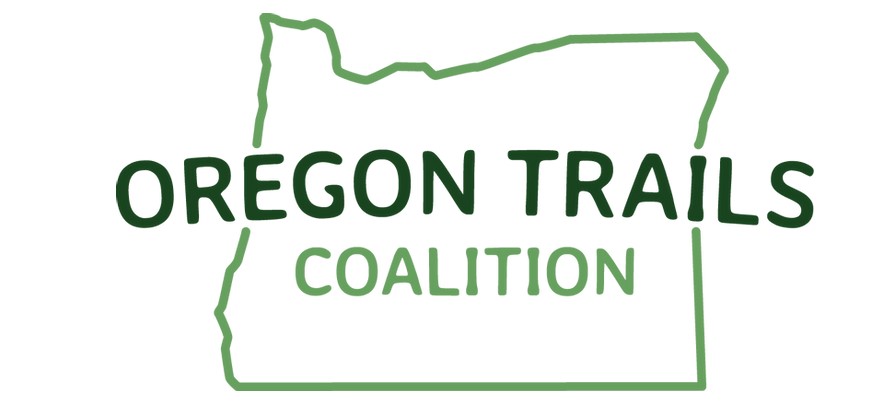
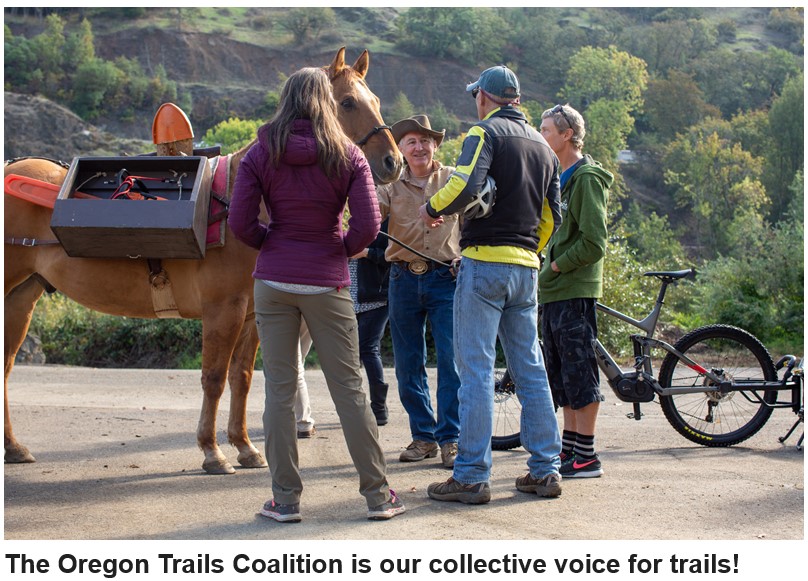
The Oregon Trails Coalition BLOG is a great source of information for all things trails and is worth checking out and getting on their mailing list.
An example is their piece on Trail Planning
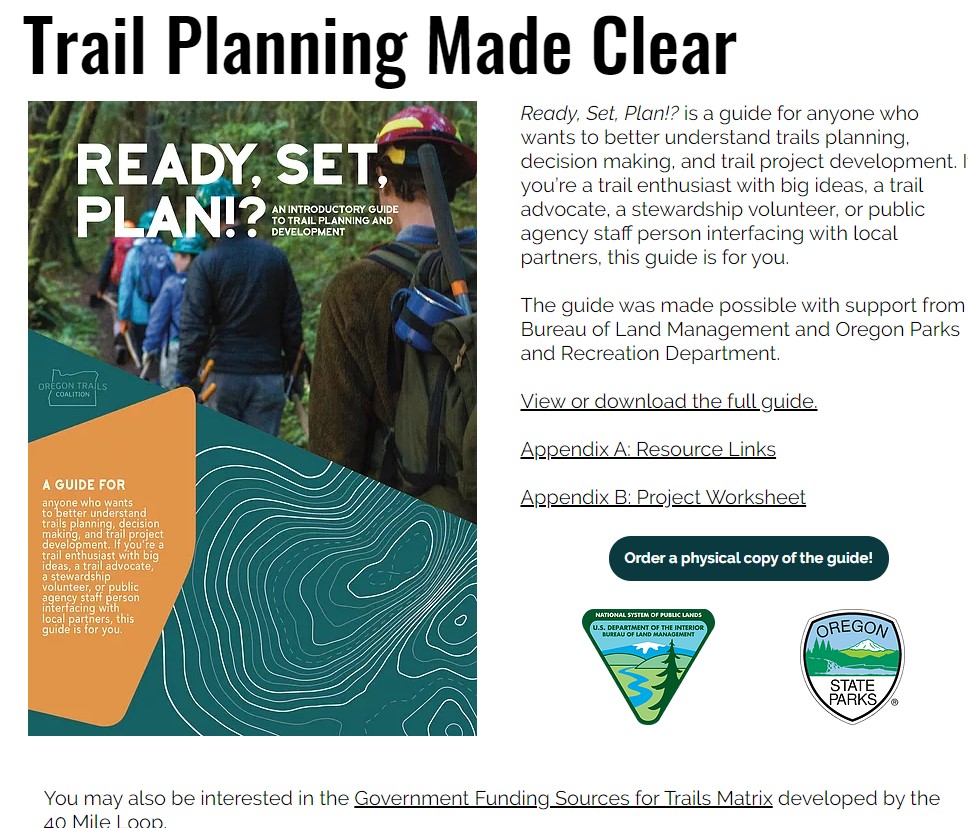
Submitted by: Robbin Schindele
Crater Lake Wilderness Campaign Coordinator
539 SE Main Street
Roseburg, OR 97443
208.365.1789


The Pulaski Users Group (PUG) organizes volunteer trips focused on trail maintenance, trail reclamation, and invasive species monitoring. Volunteers receive related training which equips them with the skills and knowledge to complete a variety of trail restoration projects. We aim to inspire community members to be stewards and advocates for our public lands.
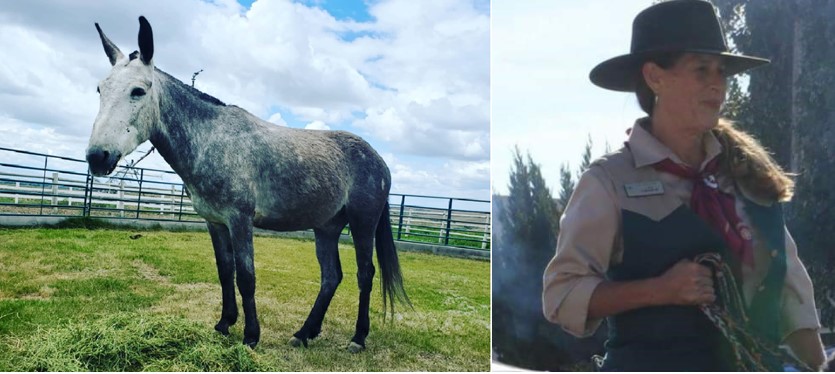
I bought a new 8-year-old mule this weekend at the 4D Select Ranch Auction. He is bonding with me and super sweet. He has been packing in Hells Canyon for the past 4 years, so he needs some saddle time before I take him out of trails but boy am I ready! Lisa Deas
Many horses that develop laminitis are overweight or obese. We know that the vast majority of laminitis cases are caused by high insulin levels. The correlation has always been obvious, and it didn’t take long for an assumption to arise that obesity is a laminitis risk factor and causes elevated insulin. There’s just one thing: it’s not true.
Relationships between diet, obesity and insulin dysregulation in horses and ponies
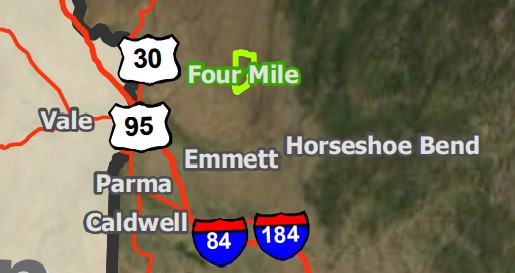
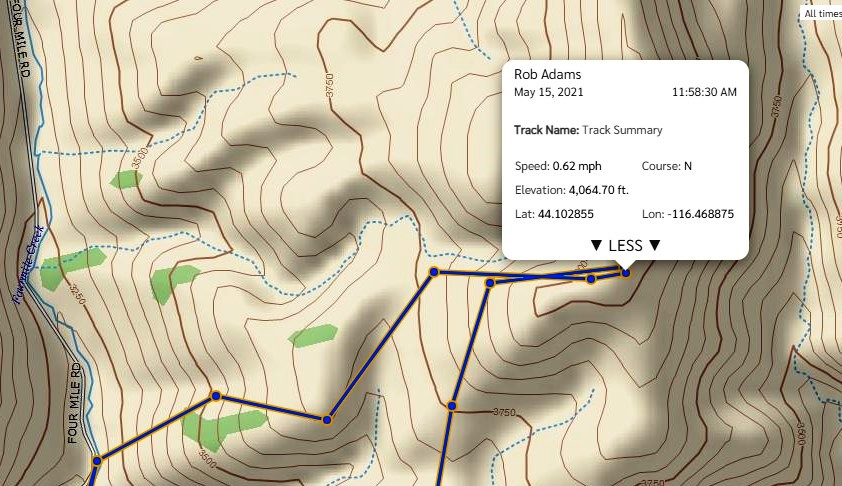
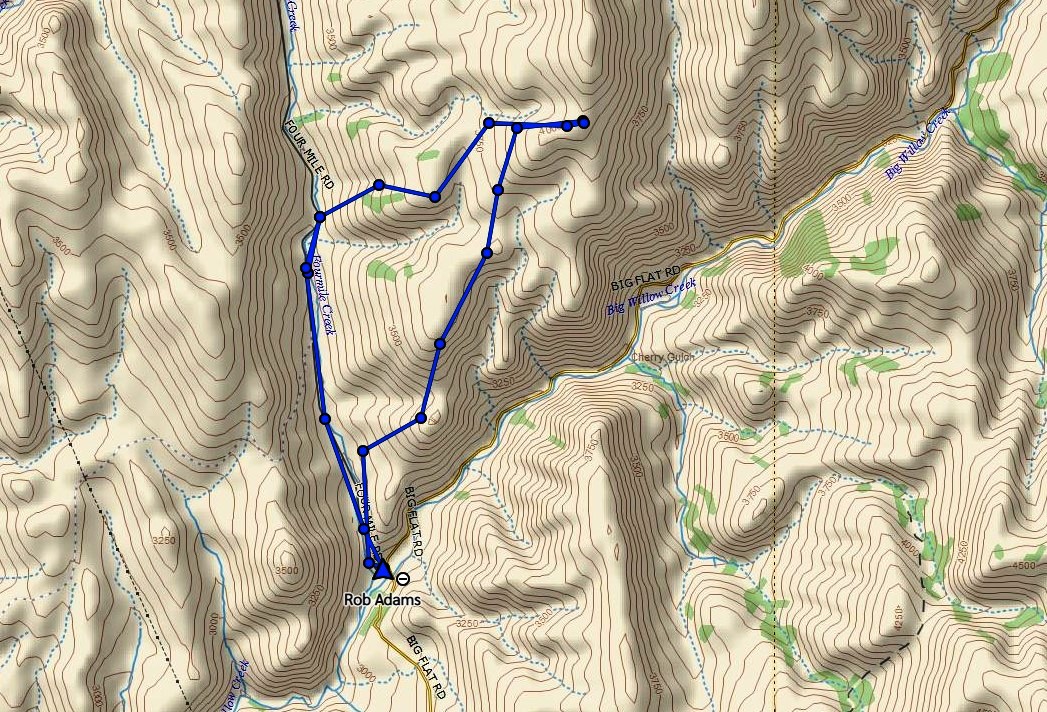
 To find out about this area CLICK HERE
To find out about this area CLICK HERE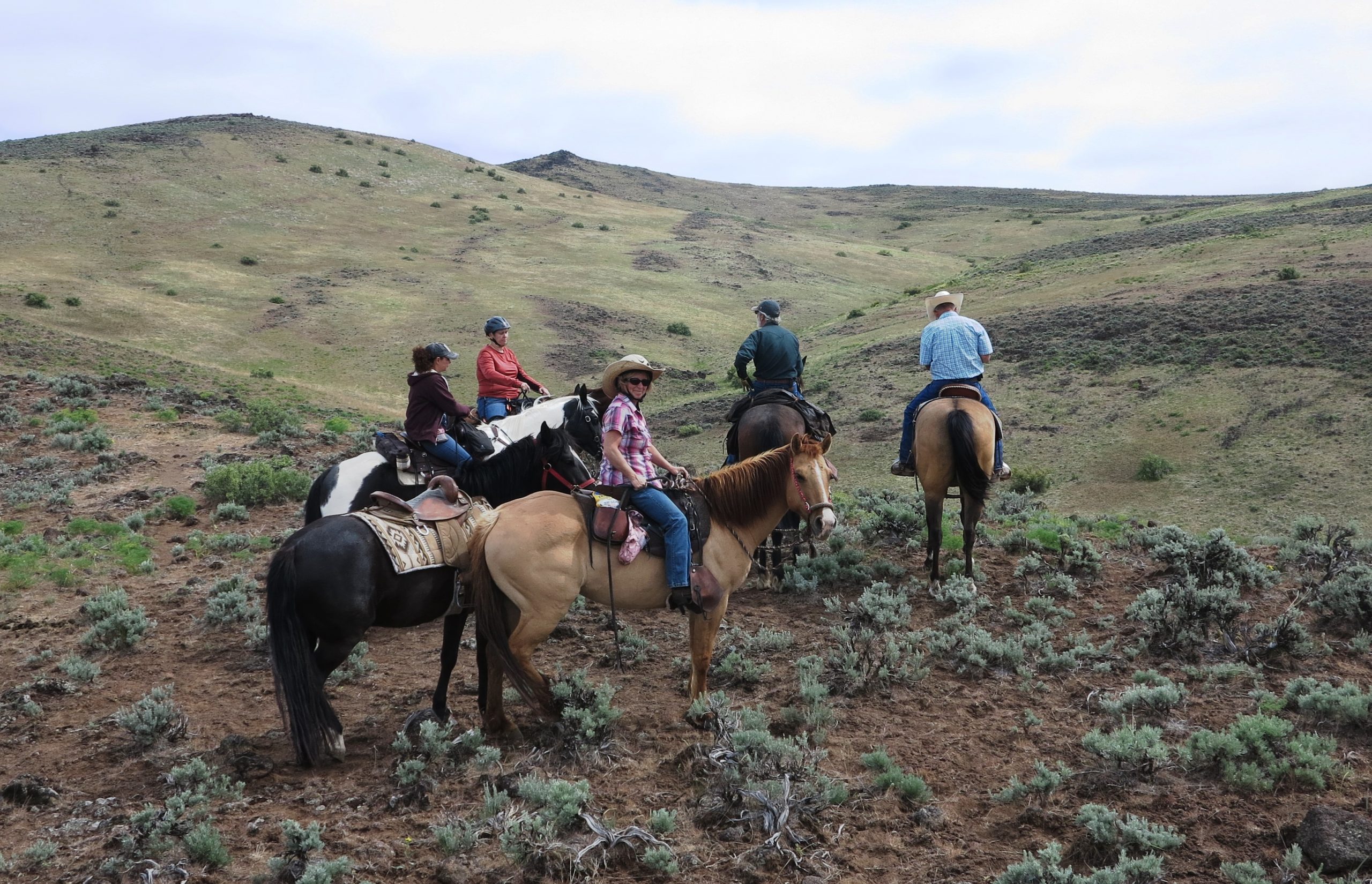
 Humans have a long history of digging wells, but we’re not the only species to tap the earth for water: New research reveals wild horses and donkeys, also known as burros, can as well.
Humans have a long history of digging wells, but we’re not the only species to tap the earth for water: New research reveals wild horses and donkeys, also known as burros, can as well.
As described in a paper published April 29 in the journal Science, the animals use their hooves to dig more than six feet deep to reach groundwater for themselves, in turn creating oases that serve as a boon to wildlife—American badgers, black bears, and an array of birds, including some declining species such as elf owls.
Horses and burros, introduced into the wild over the centuries, have taken up residence in scattered populations throughout much of the American West. The wells they dig transform into “hotbeds of animal activity,” says Erick Lundgren, a postdoctoral researcher at Aarhus University in Denmark and the study’s first author. READ MORE
2021 Stock Camping Clinic Links
Twelve member and 26 guest spent, at times, a windy and rainy day under the 4-H shelter at the Gem Country Fair ground. The chapter had prepared over the last couple of months a number of information and hands on stations to pickup information and skills necessary to safely camp with stock both at a trail head and in the back country.
Lisa Griffith led this effort and all who participated put in a lot of hours getting ready before the first guest arrived. A majority of the pictures were taken before most of the guests arrived, because afterwards we were just to busy! We also picked up a number of new members who enjoyed the clinic and want to learn more and help with our mission. We also promised them some amazing food after a great day on the trail.

 Succor Creek State Natural Area lies in a deep, rocky canyon and is a remote haven for rock hounds and wildlife watchers. Limited souvenir collecting by rock hounds is permitted in the park. A rough 15 mile dirt road leads from Oregon 201 to the park, which has primitive camping and day-use areas along both side of the creek. No water is available.
Succor Creek State Natural Area lies in a deep, rocky canyon and is a remote haven for rock hounds and wildlife watchers. Limited souvenir collecting by rock hounds is permitted in the park. A rough 15 mile dirt road leads from Oregon 201 to the park, which has primitive camping and day-use areas along both side of the creek. No water is available.
The Succor Creek Bridge is open to vehicles for access to the campsites on the east side of the creek (right/south of the bridge). The road to the left/north of the bridge is not safe for vehicular travel. Staff and Staff Volunteers are not stationed at this site. This is a remote recreational experience, please prepare accordingly.
History
The land was obtained between 1966 and 1969 by a grant from the U. S. Government (Bureau of Land Management), and by purchase and litigation with private owners. The name Succor Creek is said to refer to early travelers in the Snake River Basin who, having been saved by the creek’s fresh water, applied the name as a corruption of the Spanish word socorro, meaning help or aid.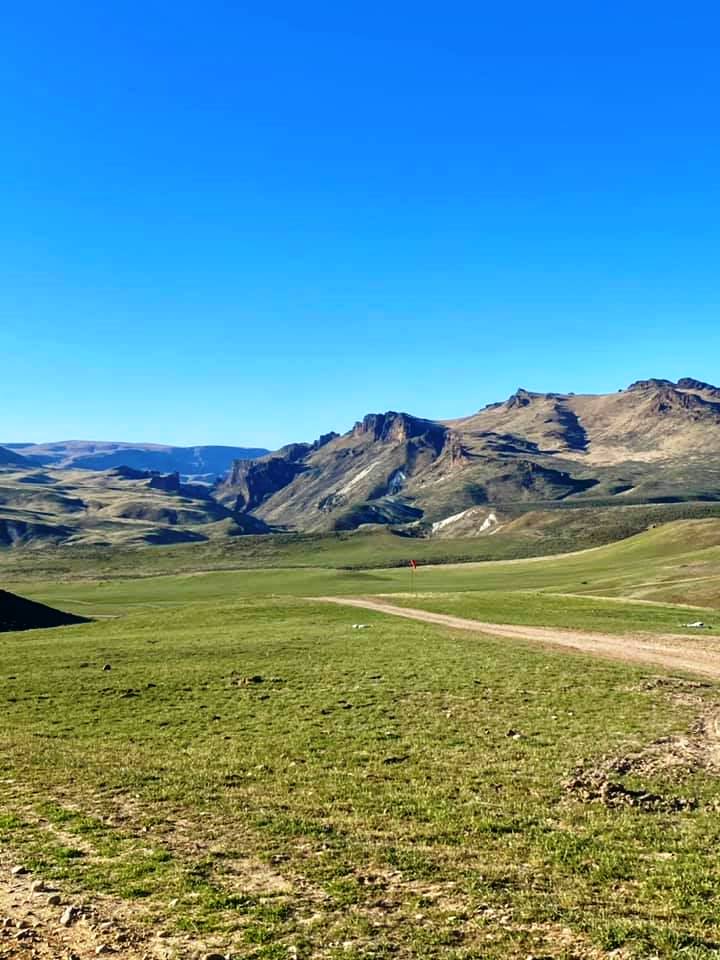
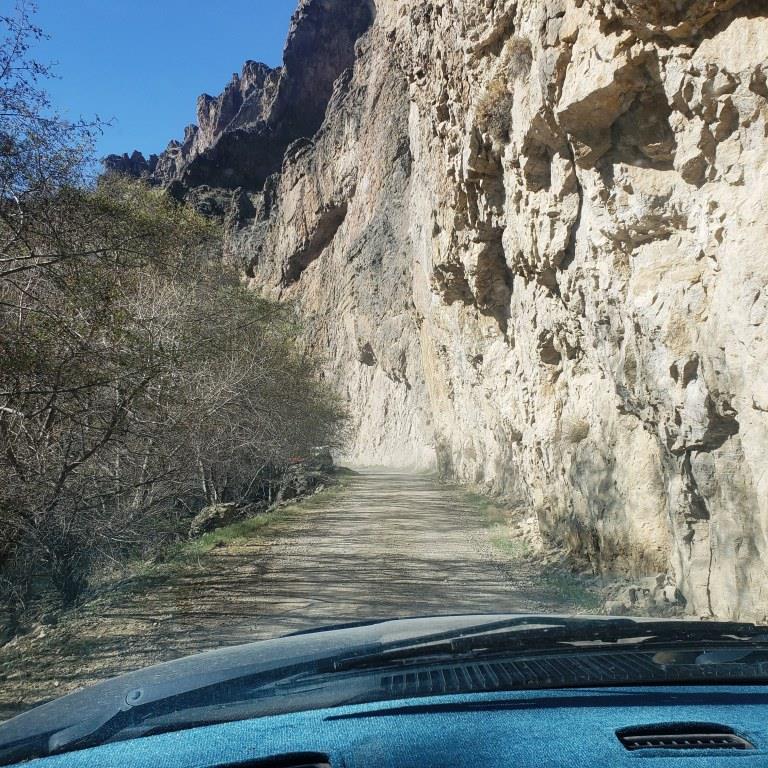 On a brisk and sunny Sunday Morning, 14 members met at the Homedale High School parking lot and then convoyed to the state park trail head. Succor Creek road is 15 miles of gravel that was for the most part in excellent shape with a few sections of washboard.
On a brisk and sunny Sunday Morning, 14 members met at the Homedale High School parking lot and then convoyed to the state park trail head. Succor Creek road is 15 miles of gravel that was for the most part in excellent shape with a few sections of washboard.
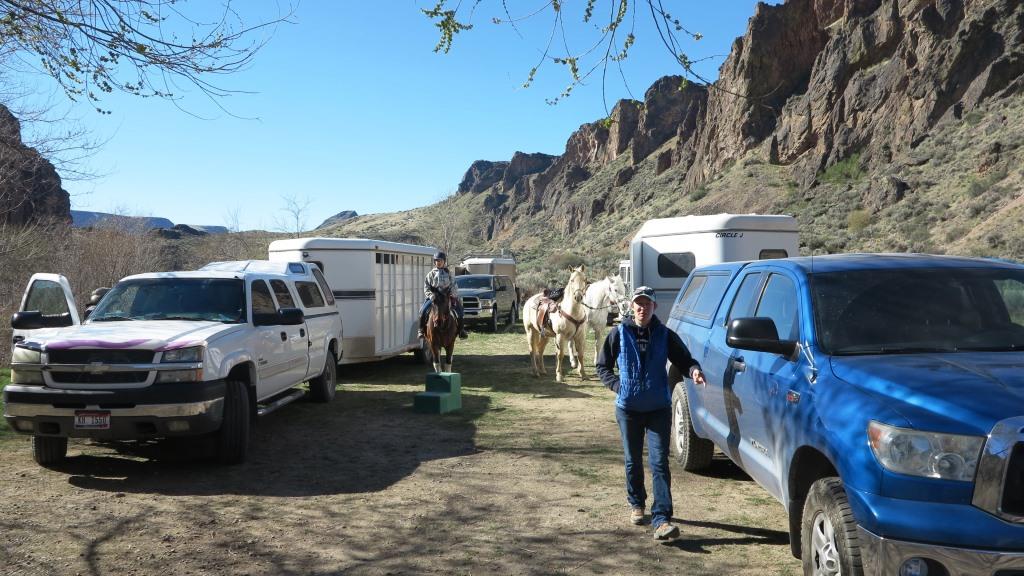

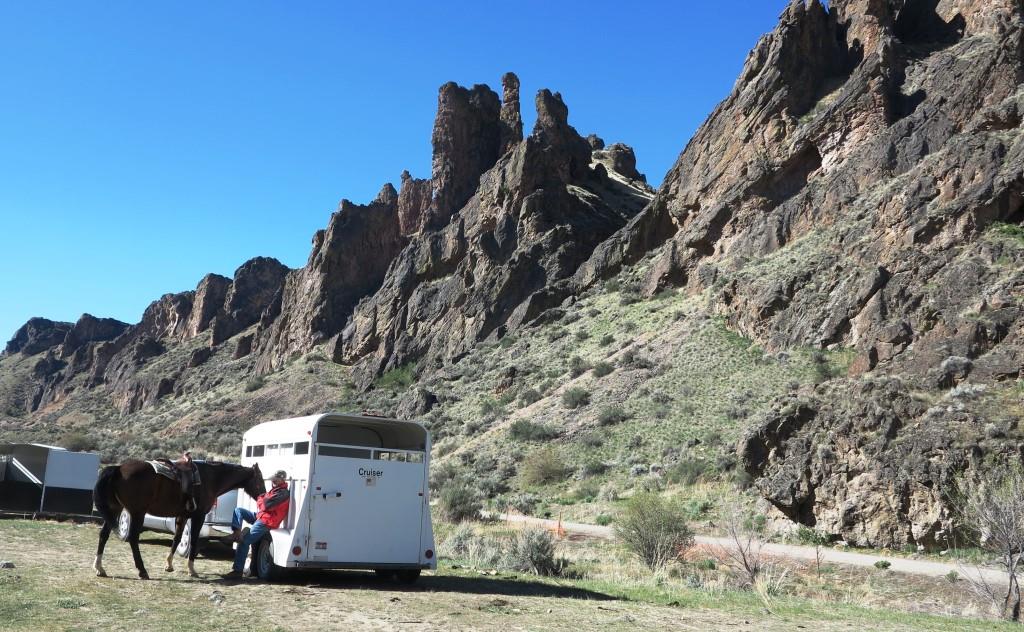
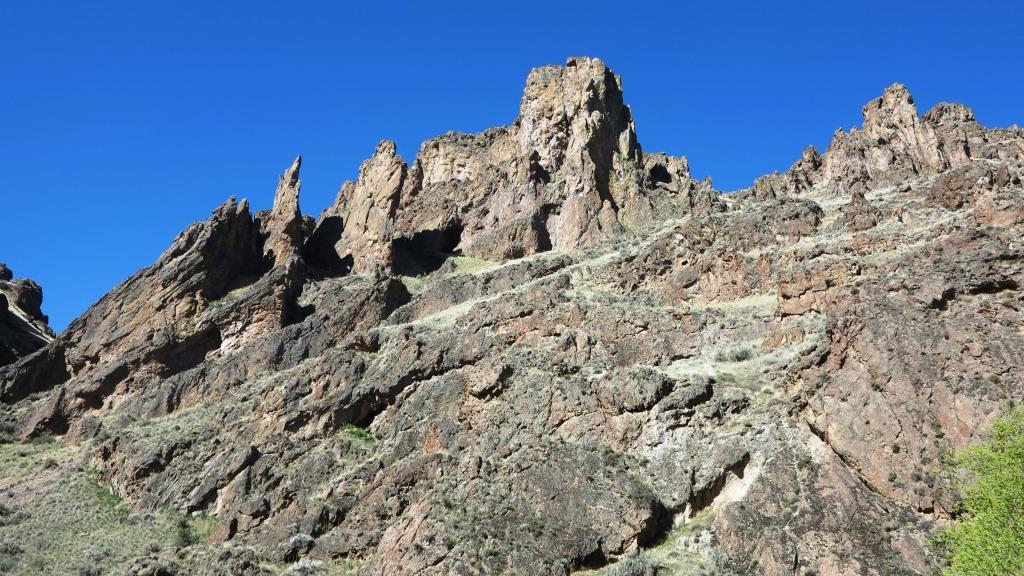 By 10:45 we were all saddled and ready to go, the air had warmed a bit and the wind was still lite.
By 10:45 we were all saddled and ready to go, the air had warmed a bit and the wind was still lite.
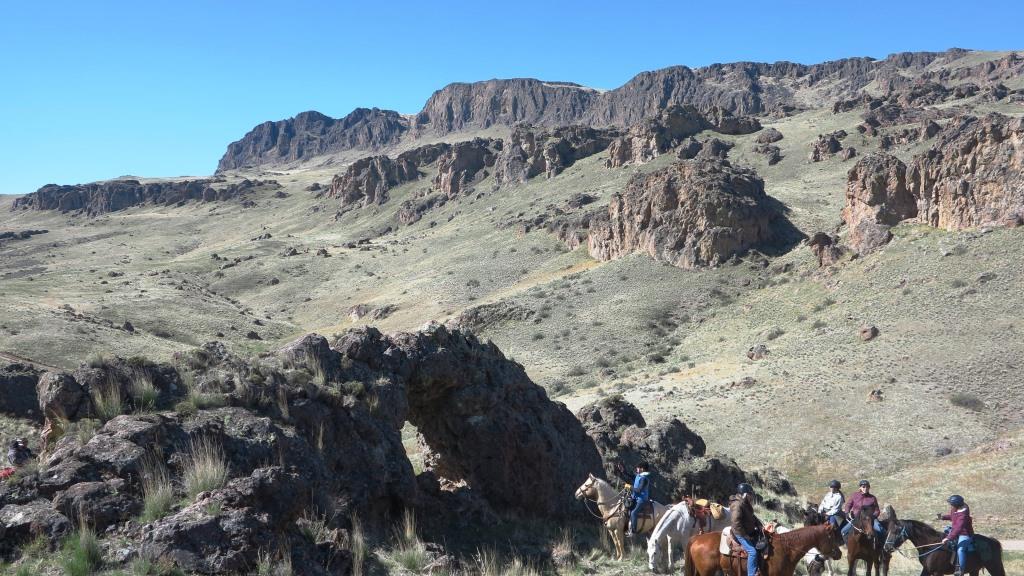
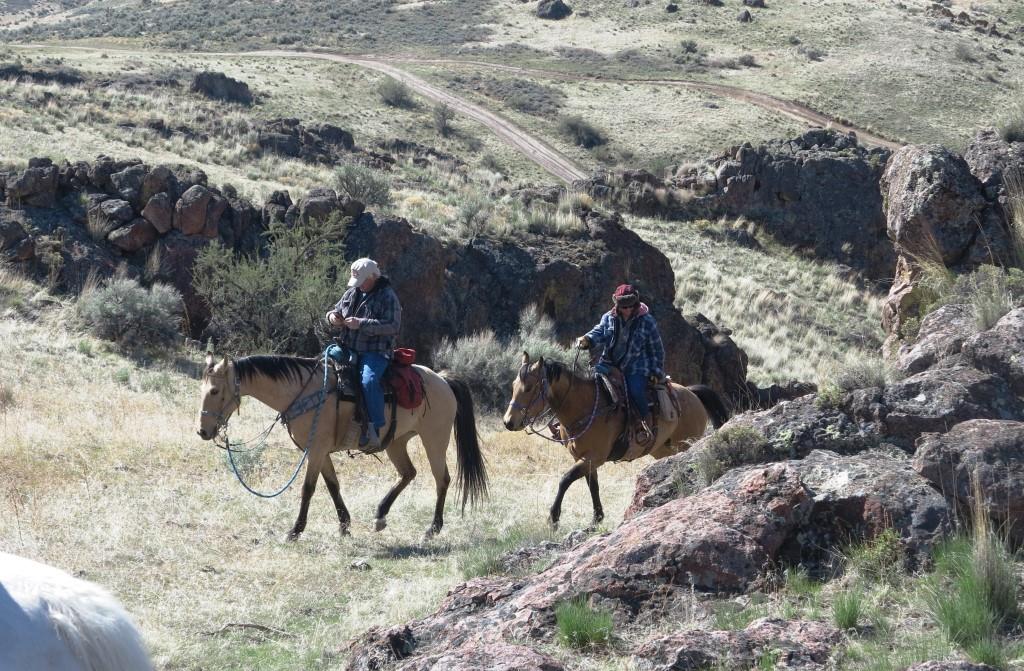

Tom and Sherry noticed a bridge rock formation that we all rode up a hill to view closer. After a number of pictures were taken we continued up to a bench. The wind was picking up so we rode near the rocked, which acted as a poor windbreak.
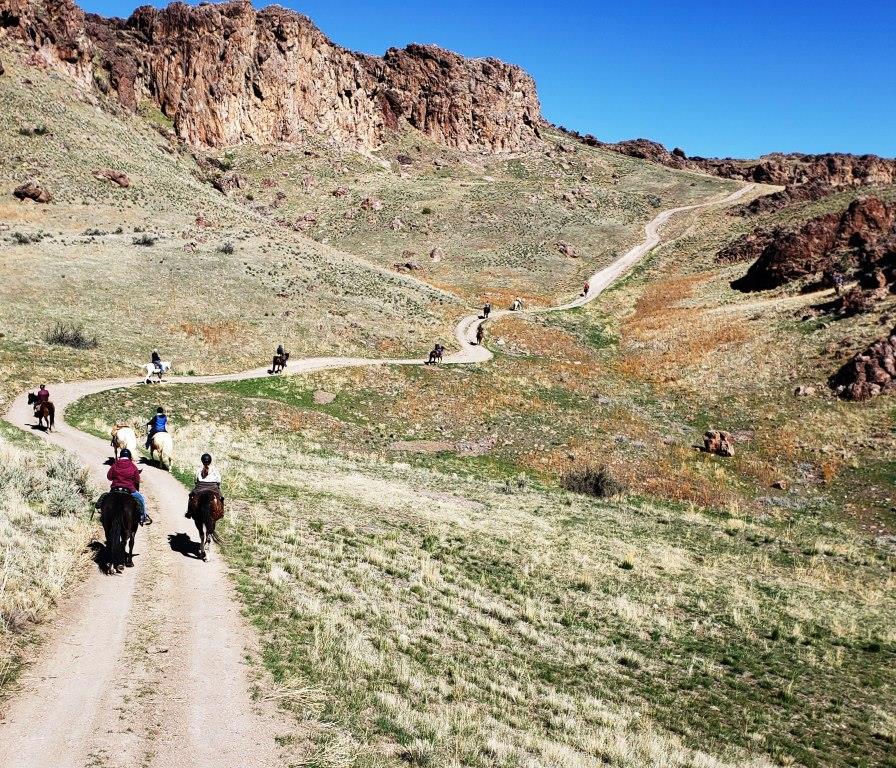
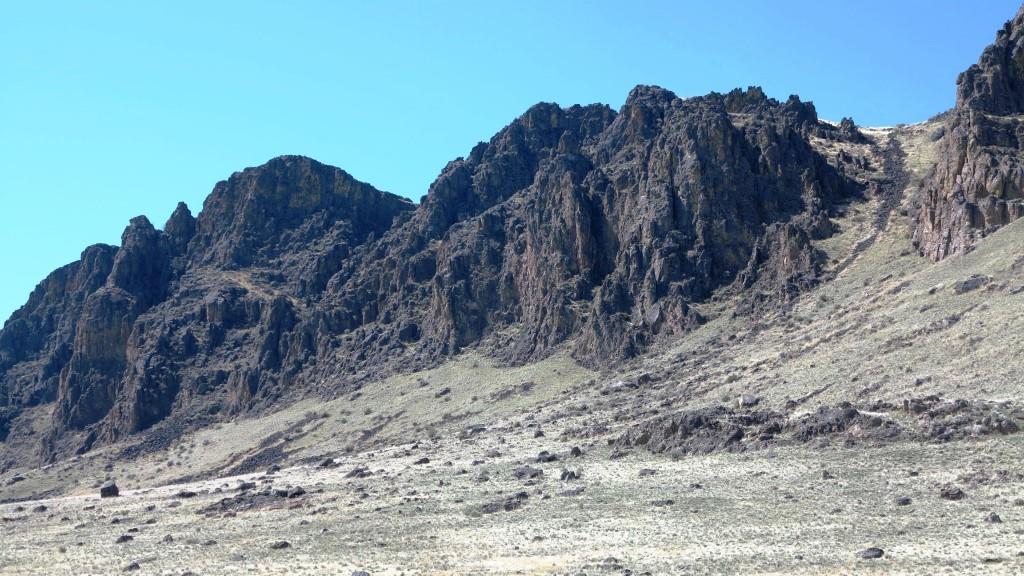
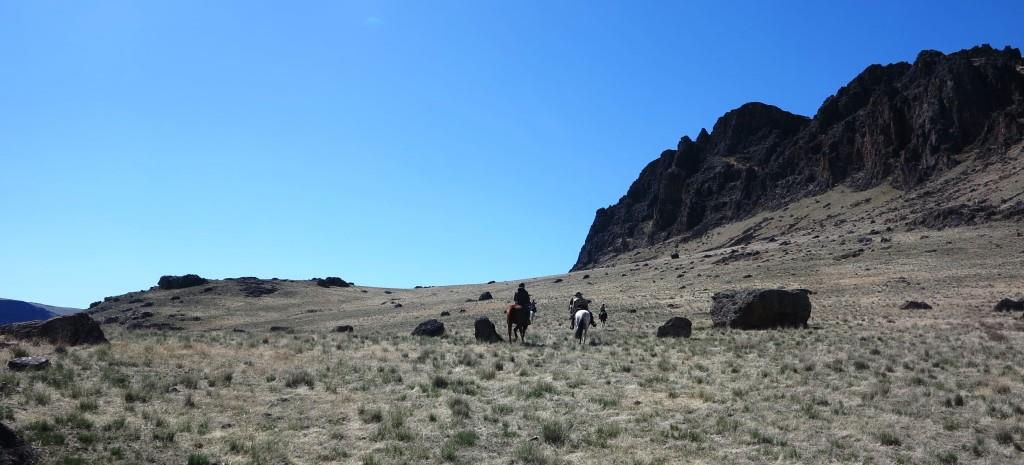
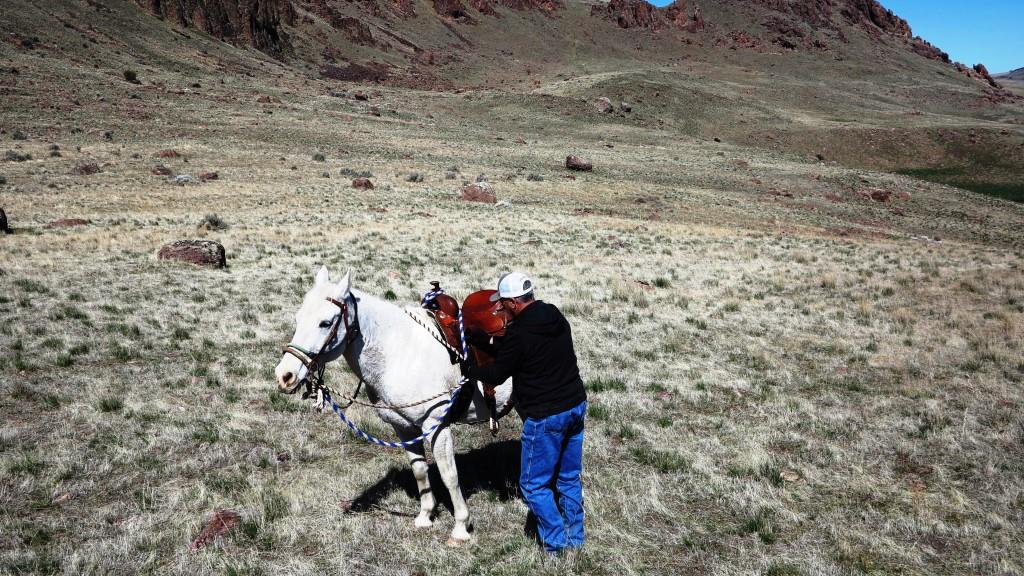
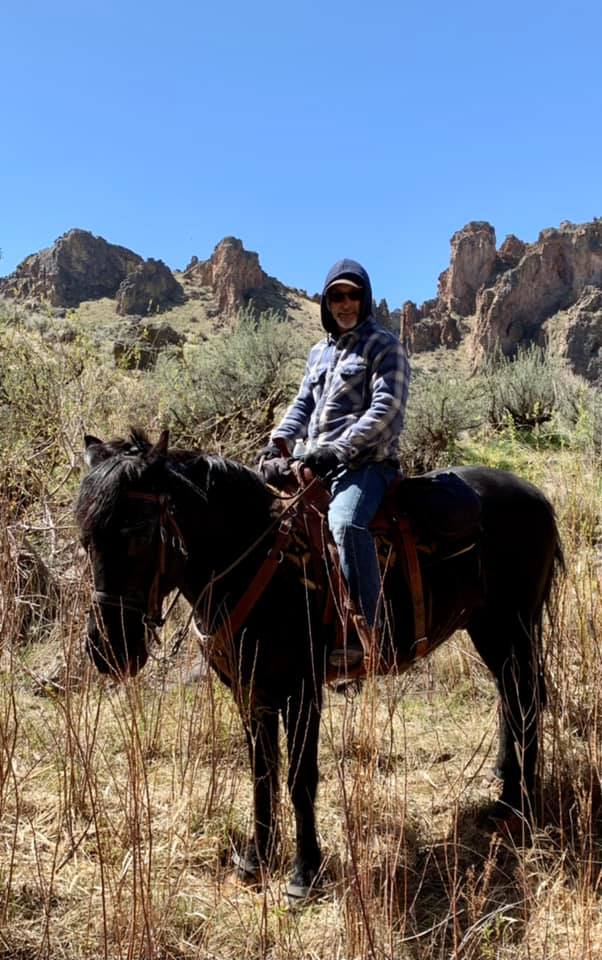

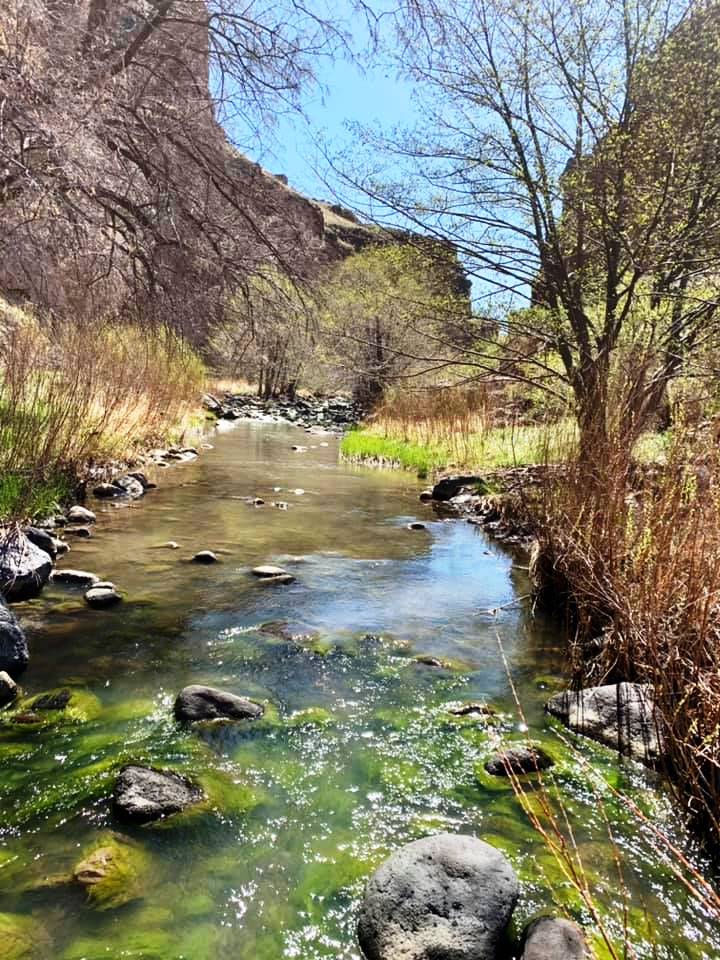
NYT – April 7, 2021 by Ali Watkins
Inexperienced adventurers have flooded remote areas like Wyoming’s Sublette County during the pandemic. When they call for help, the task is left to an overwhelmed network of volunteers. LINK to Audio
PINEDALE, Wyo. — Kenna Tanner and her team can list the cases from memory: There was the woman who got tired and did not feel like finishing her hike; the campers, in shorts during a blizzard; the base jumper, misjudging his leap from a treacherous granite cliff face; the ill-equipped snowmobiler, buried up to his neck in an avalanche.
All of them were pulled by Ms. Tanner and the Tip Top Search and Rescue crew from the rugged Wind River mountain range in the last year, in this sprawling, remote pocket of western Wyoming. And all of them, their rescuers said, were wildly unprepared for the brutal backcountry in which they were traveling.
“It is super frustrating,” said Ms. Tanner, Tip Top’s director. “We just wish that people respected the risk.”
Such operations within the parks are handled by the National Park Service. Outside those boundaries, search-and-rescue missions fall to volunteer groups like Tip Top, which since 1980 has policed the harrowing Wind River mountain range, about an hour southeast of Jackson. After decades as a well-kept wilderness secret, reserved for only the most experienced outdoor enthusiasts, a pandemic-era mainstream has now discovered this rugged stretch of Wyoming.
“They come here and they’re like, ‘It’s beautiful, it’s a big open space.’ And it is,” Lesta Erickson, a Tip Top volunteer, said. “But it’s also dangerous.” READ MORE
RSVP – Sign up for one or all of the events
April 15th 6:30PM – 7:30PM MST
CONGRESS, CONSERVATION, AND COMPROMISE: CHAMPIONS OF THE FRANK WITH SPECIAL GUESTS LARRY LAROCCO AND ROB MASON
Join SBFC as we talk with former Congressman Larry LaRocco and Central Idaho Representative for The Wilderness Society Rob Mason about the establishment of the Frank Church-River of No Return Wilderness. Many people know the Frank as a beloved wilderness area, but not as many know the history behind championing this Wilderness designation. Learn about the legislative leg work to advance the Wilderness proposal into law during the 1970’s and 80’s, and the compromises that were made to accomplish such a feat. Senator Frank Church’s legacy lives on in these wild lands, and it is thanks to the hard work of many to ensure that the legacy of Wilderness lives on for generations to come.
Larry LaRocco is the former Director of Senator Frank Church’s North Idaho office, former two-term US House representative (1991-1995), and board member of the Frank Church Institute.
Rob Mason joined The Wilderness Society in September 2013 as the Central Idaho Representative and works on land protection efforts with communities and local stakeholders in the state.
April 22nd 6:30PM – 7:30PM MST
PORTALS TO THE PAST FEATURING AUTHORS AND WILDLIFE BIOLOGISTS JIM & HOLLY AKENSON
Jim & Holly Akenson spent 21 years living in the remote wilds of the Frank Church Wilderness area at Taylor Ranch, and will give us an intimate view of the people who have lived, loved, and survived in the wild Frank. Hear firsthand about the Akenson’s experiences while living in this remote place and how their archaeological and biological research painted a rich tapestry of the deep and unyielding history of the Frank. From the Indigenous peoples who stewarded these lands for millennia, to homesteaders and modern research stations, learn something new about the ever-changing landscapes and communities that reside within these 2.3 million acres.
April 29th 6:30PM – 7:30PM MST
THRU-HIKING THE ICT: 982 MILES OF SOLITUDE
Lisa and Jeremy Johnson spent 51 days hiking the 982 miles of the Idaho Centennial Trail through some of the most remote terrain in the lower 48, including a 200-mile section of the Frank! Hear their tales from the trails—through the Frank and beyond—and learn how they survived trekking the length of Idaho. Throughout these 982 miles Lisa and Jeremy crossed through some of the most treacherous landscapes, including a challenging corridor called Marble Creek, a narrow canyon trail where trails disappear into the creek and bushwhacking is a fact of life. It also happens to be SBFC Executive Director Sally Ferguson’s favorite trail in the Frank, and a portion of the ICT that SBFC has worked to steward since 2012. Sally will give you the scoop on the work we do to protect and preserve these portions of the ICT for those brave enough to get out there!


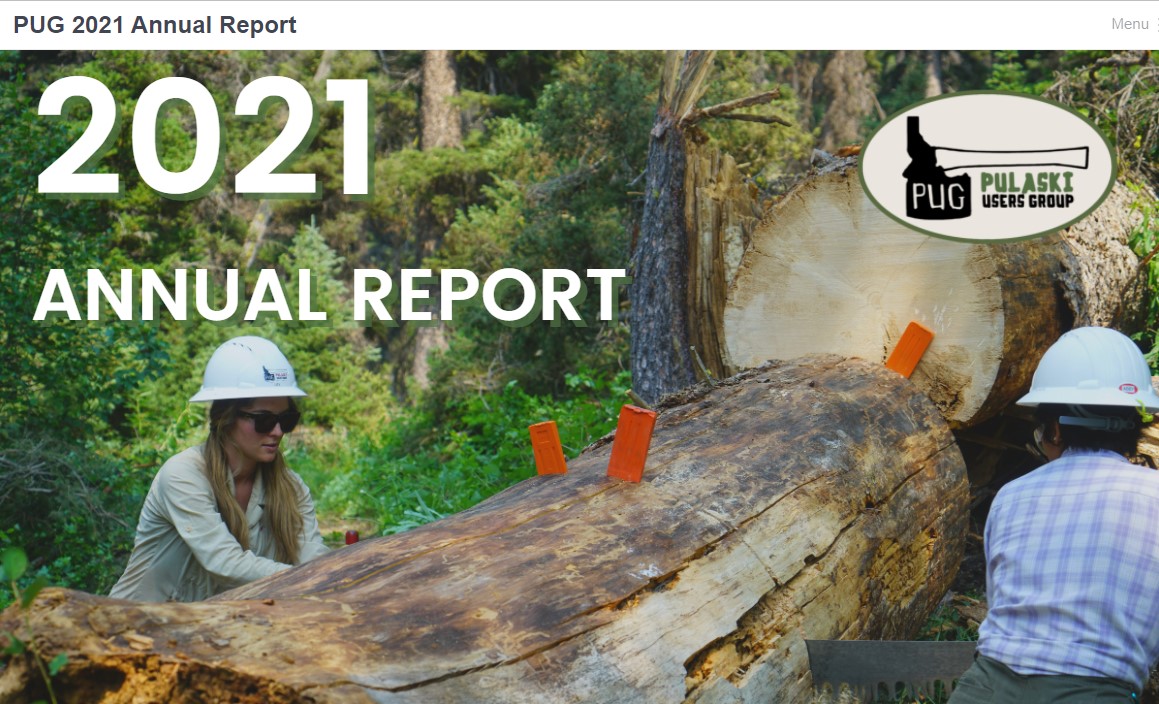




 IDPR Activities
IDPR Activities



